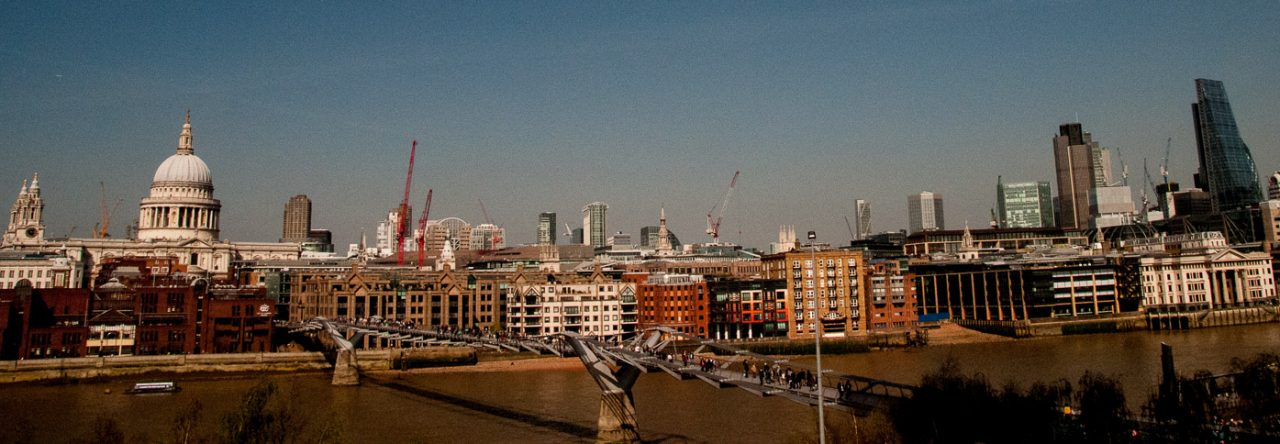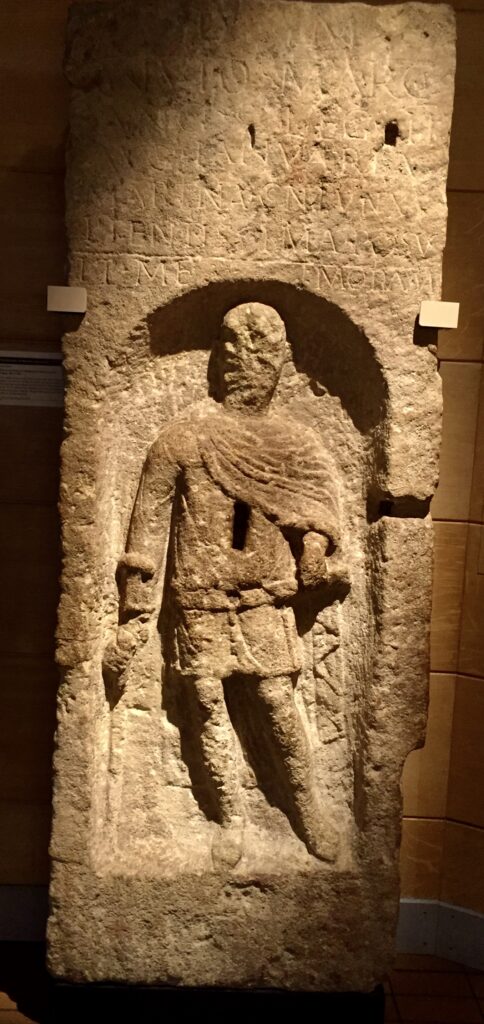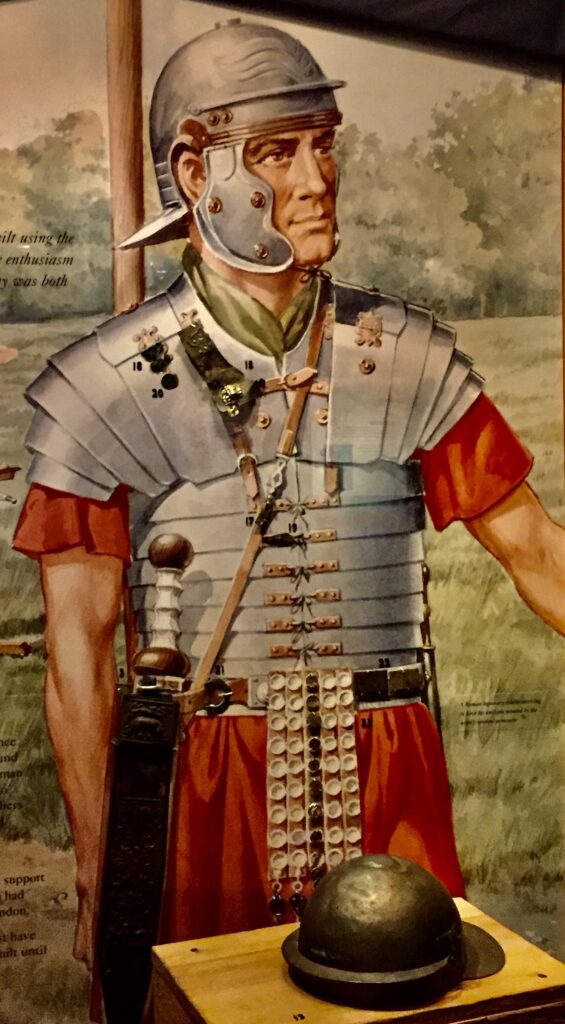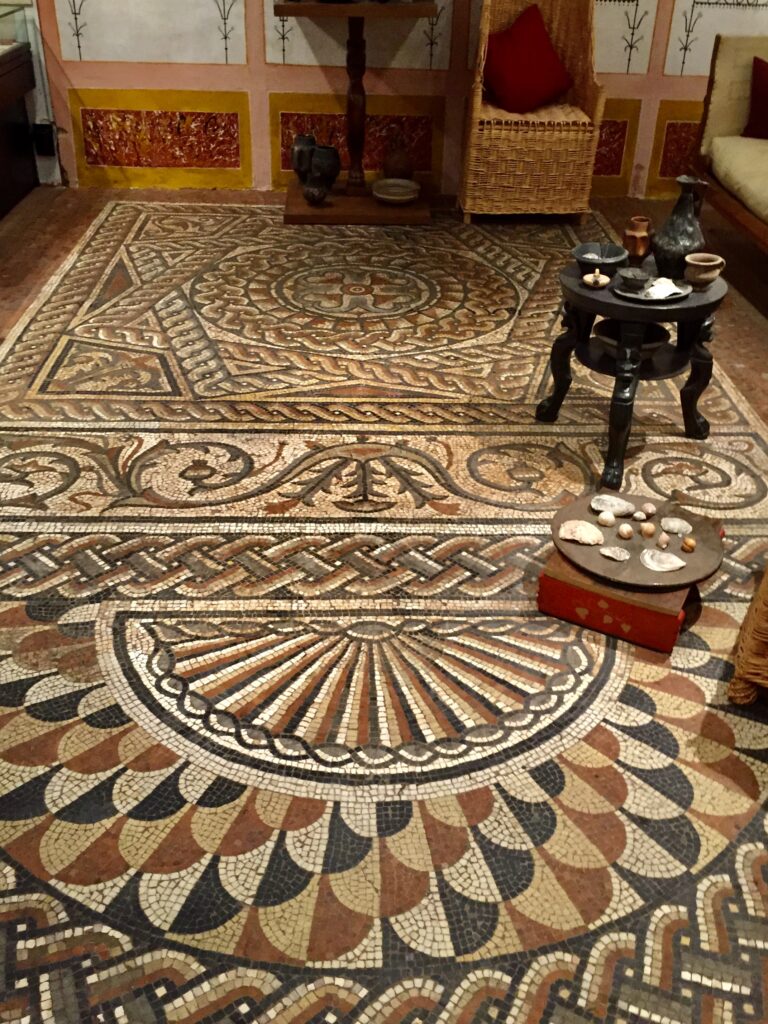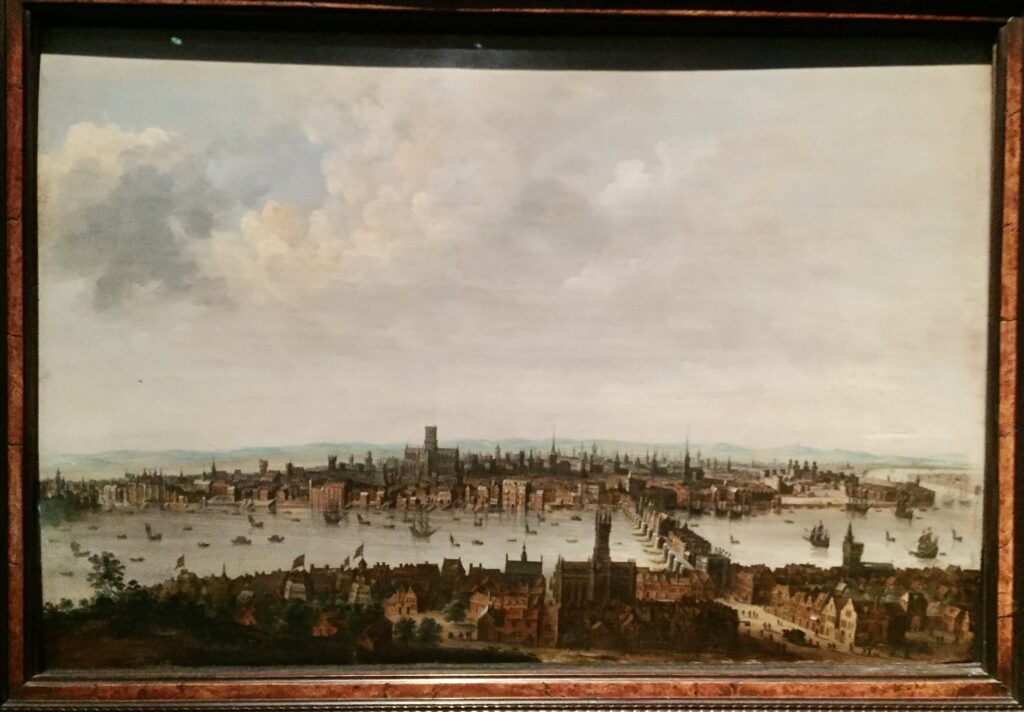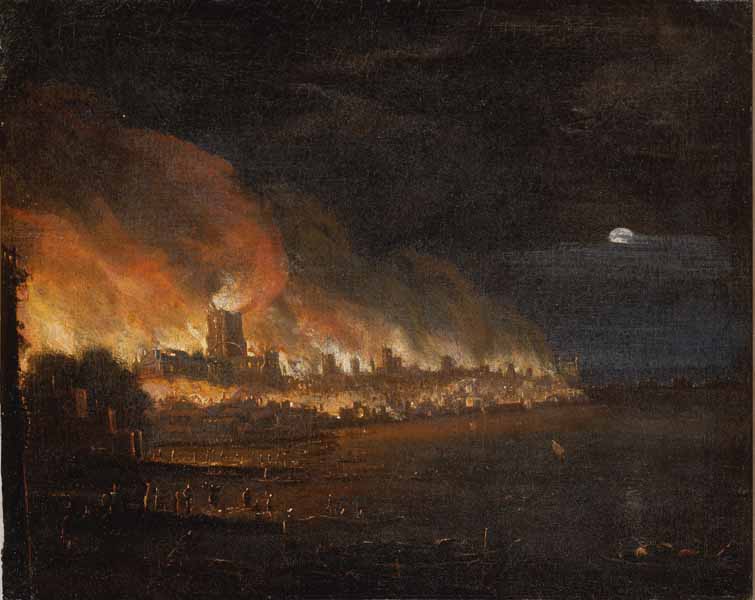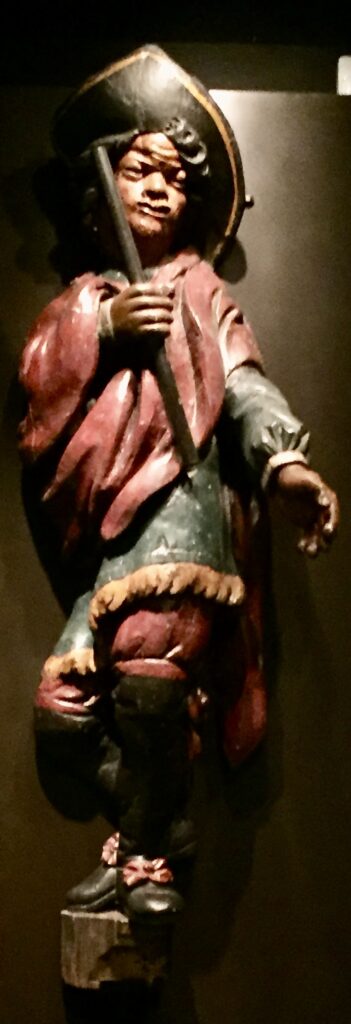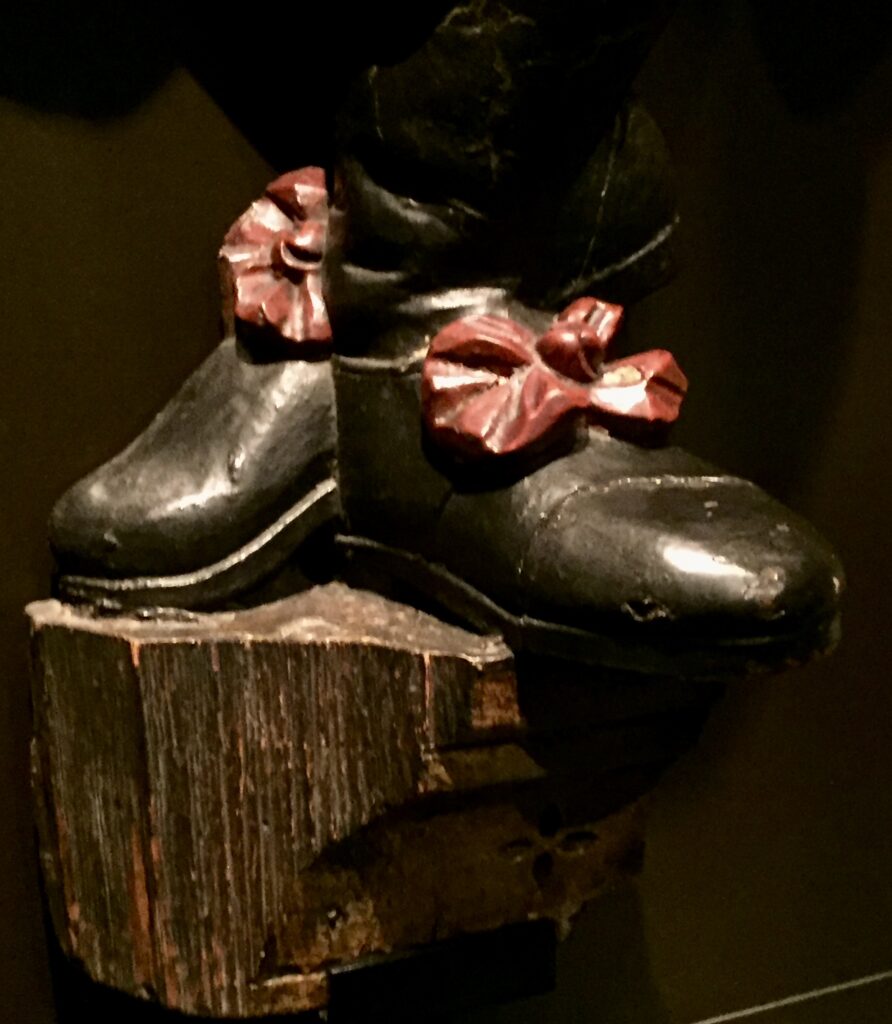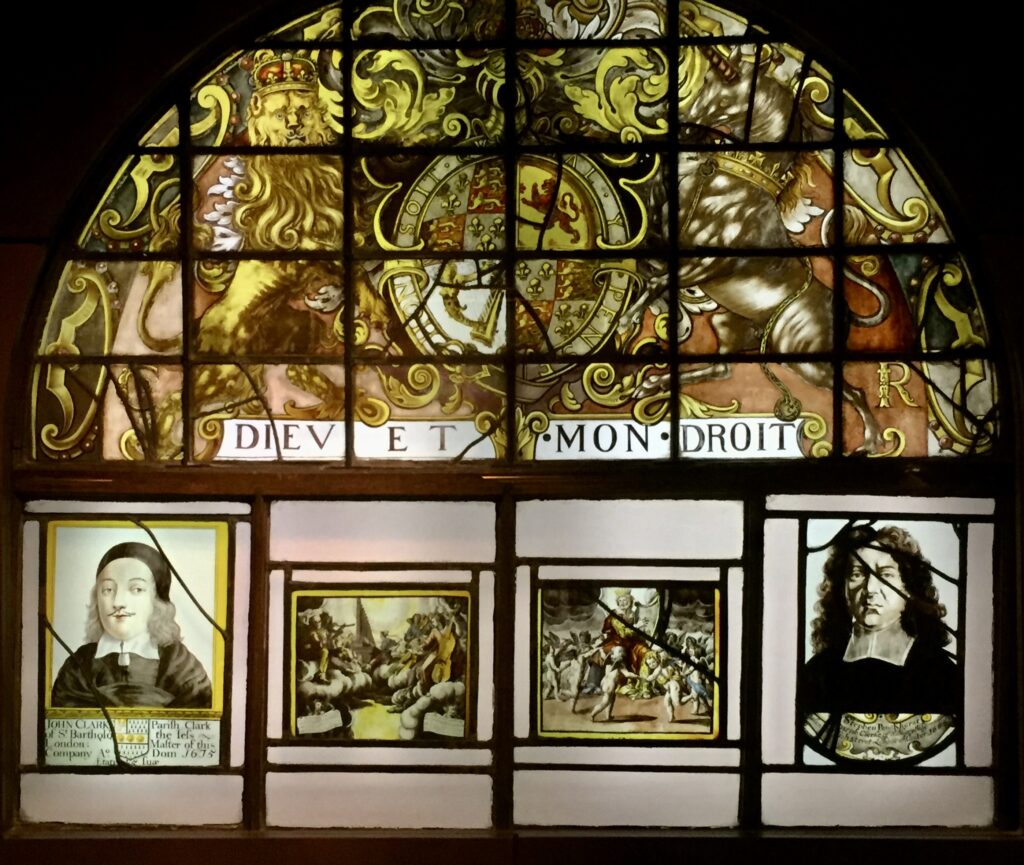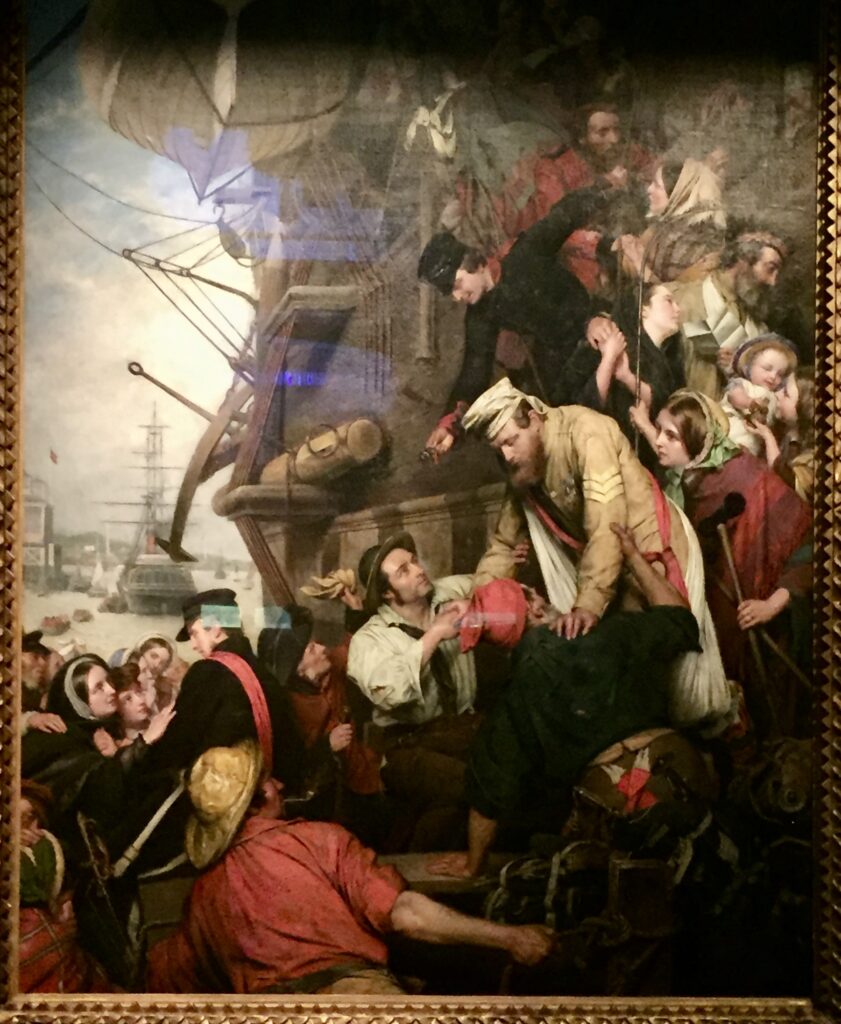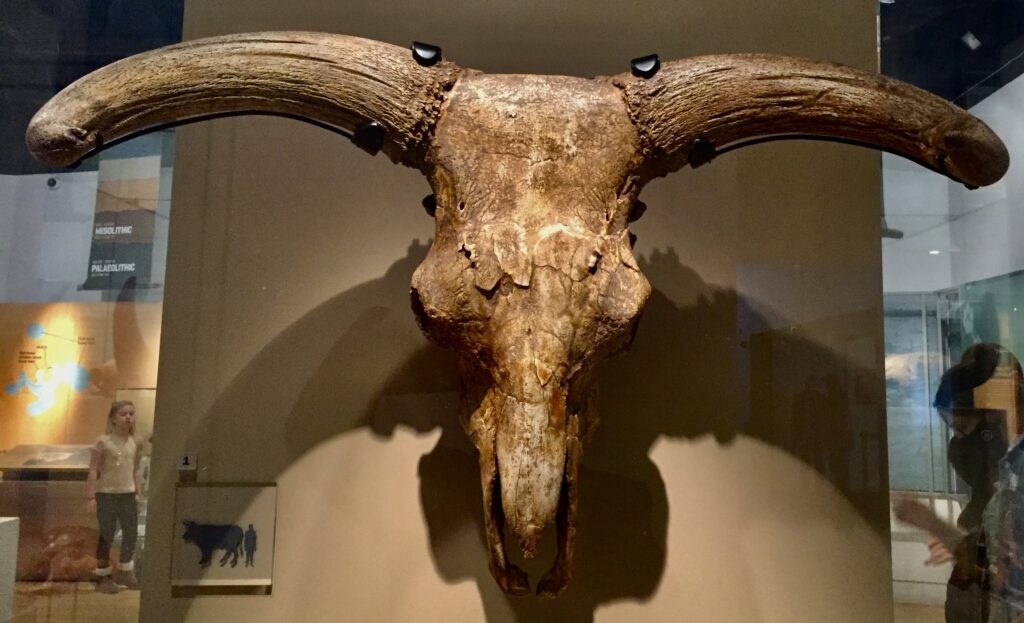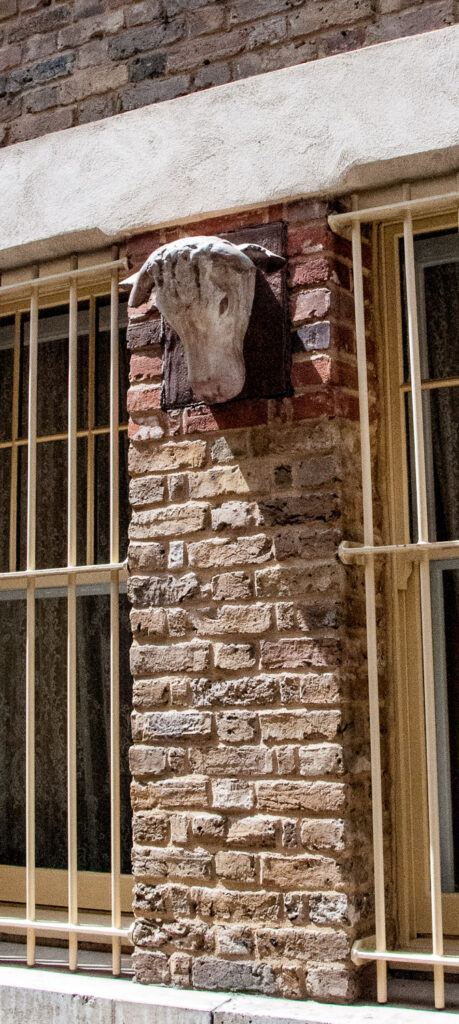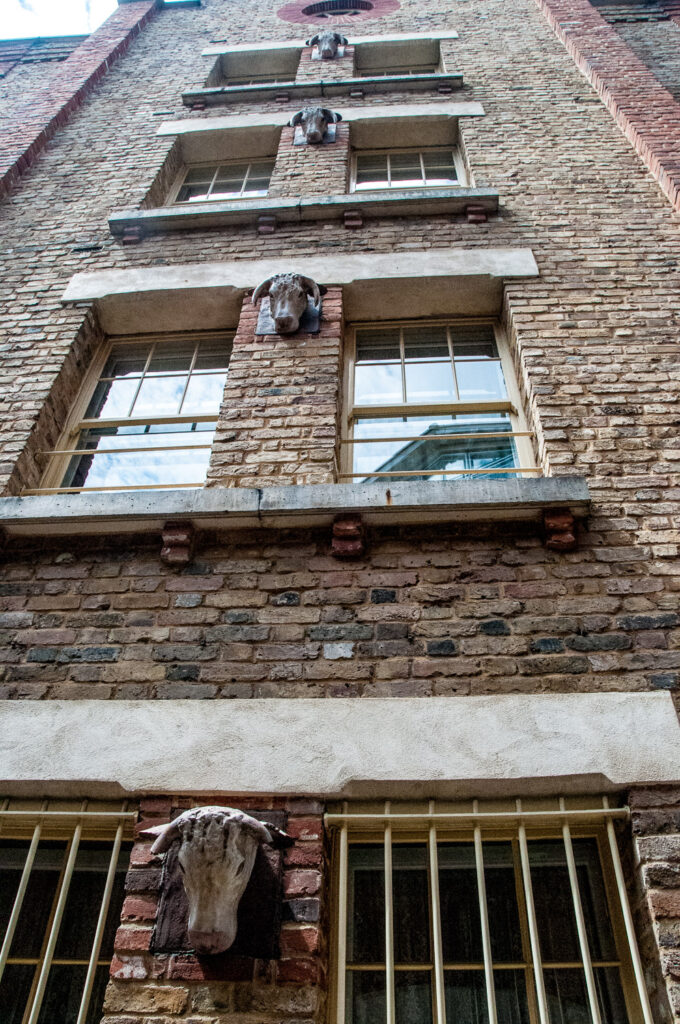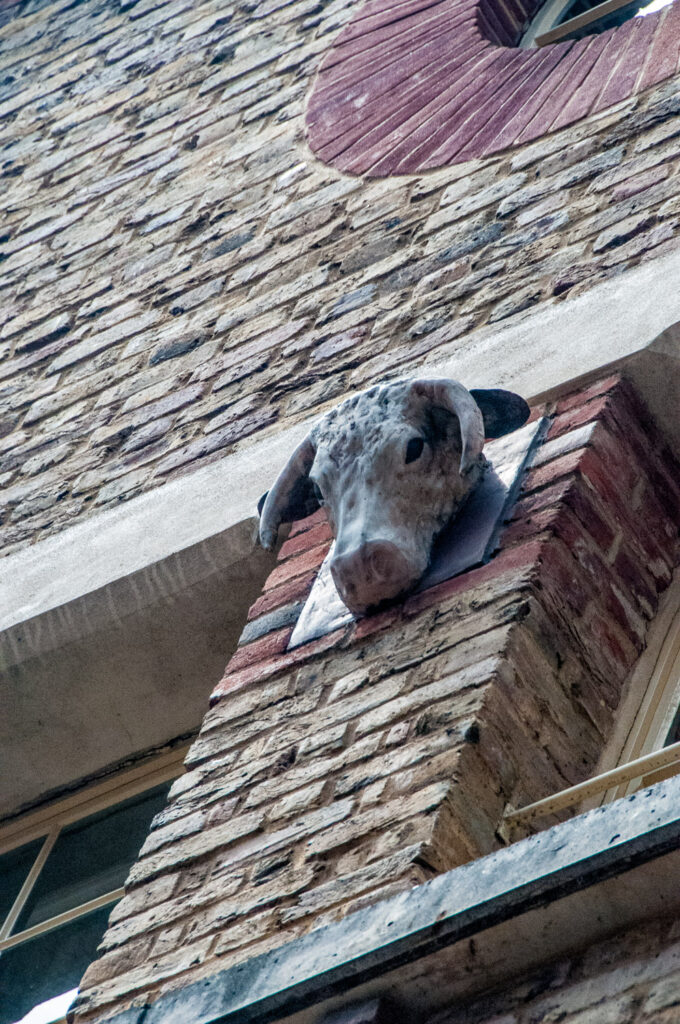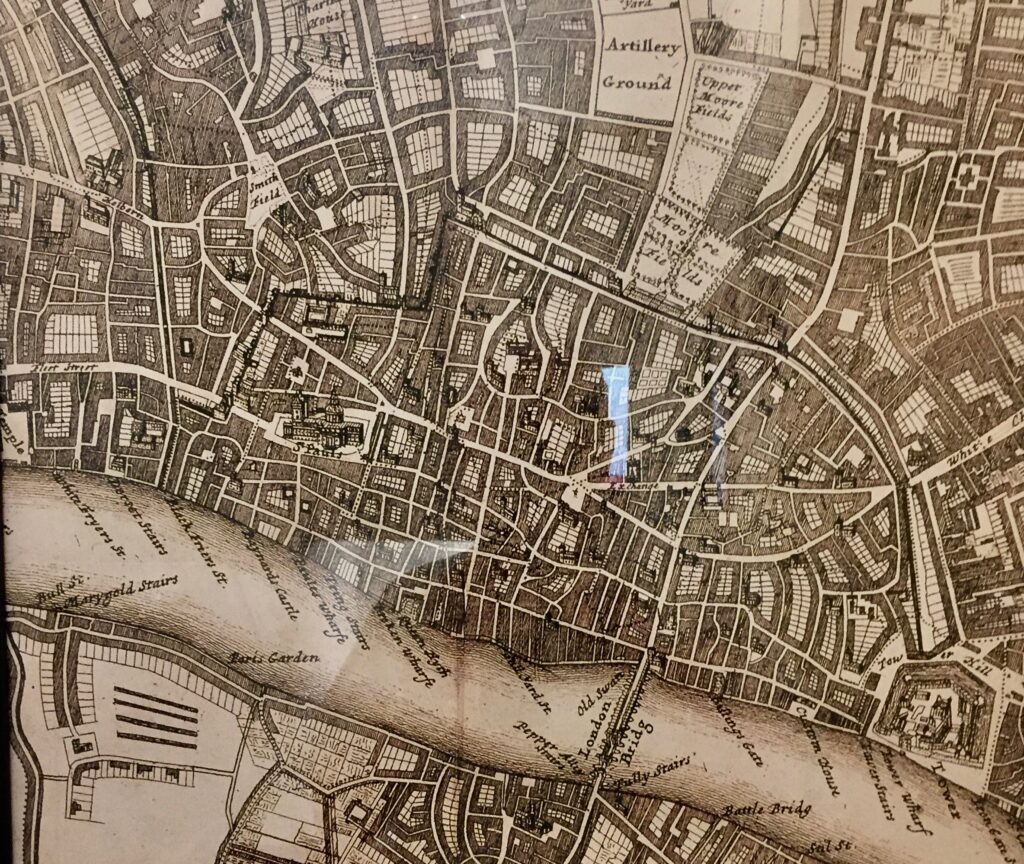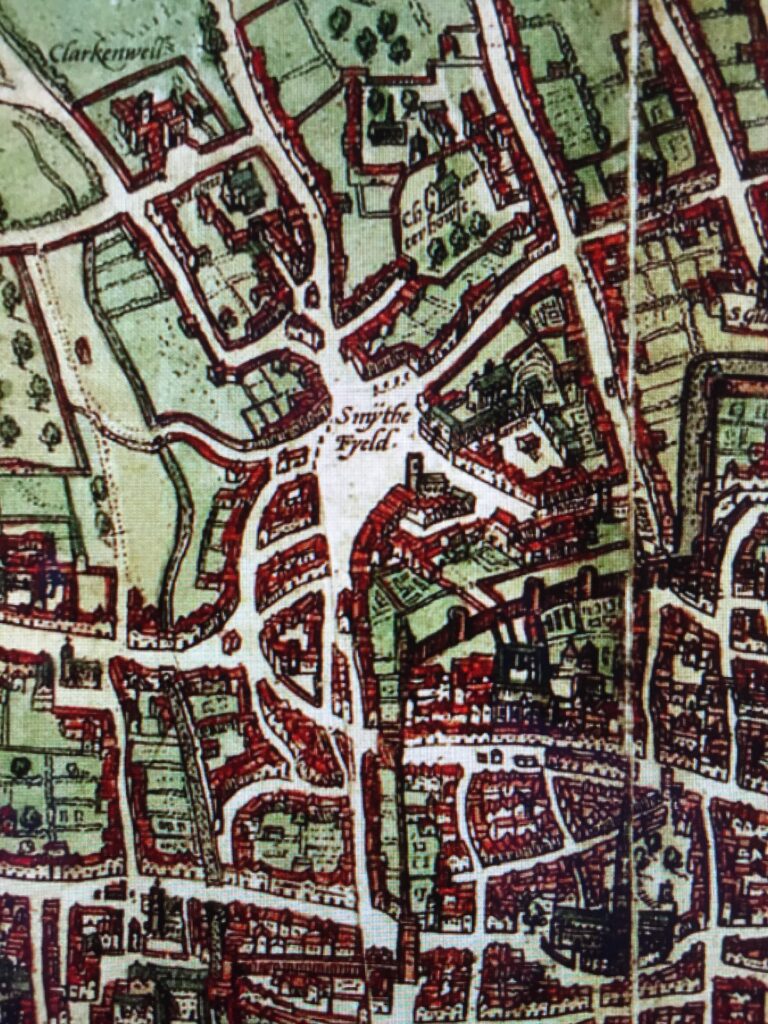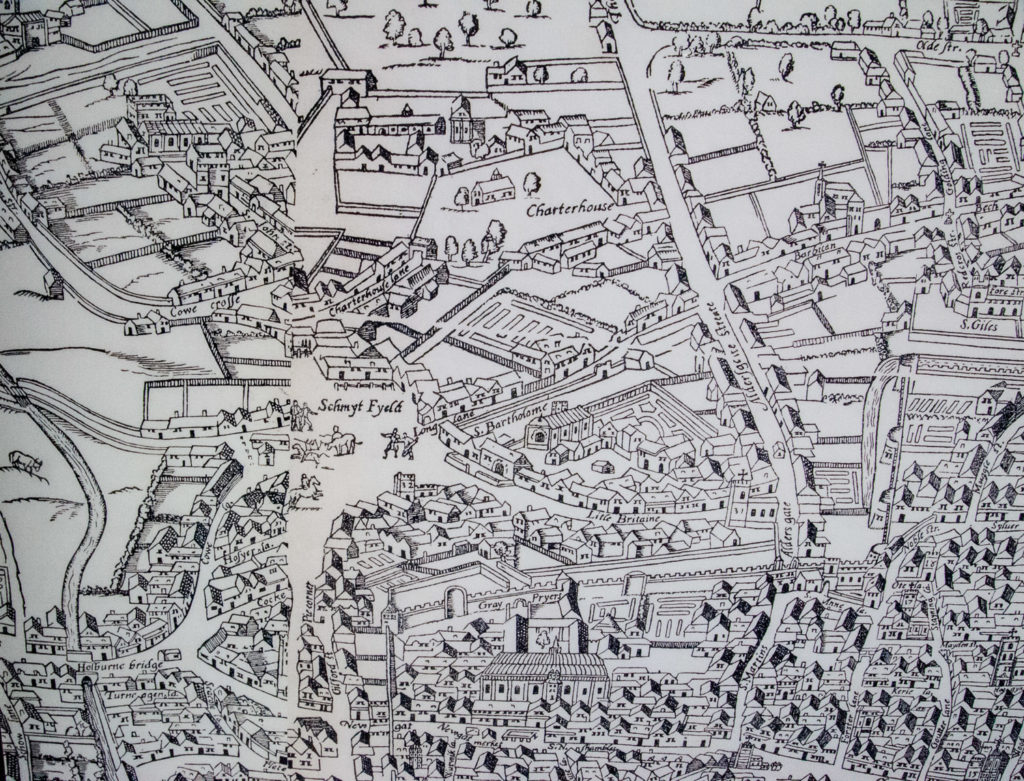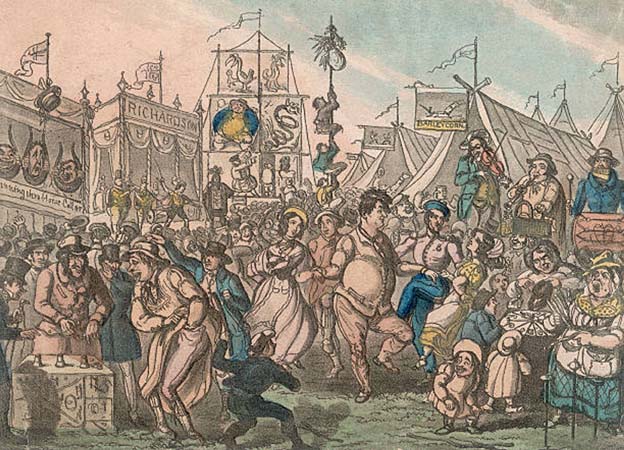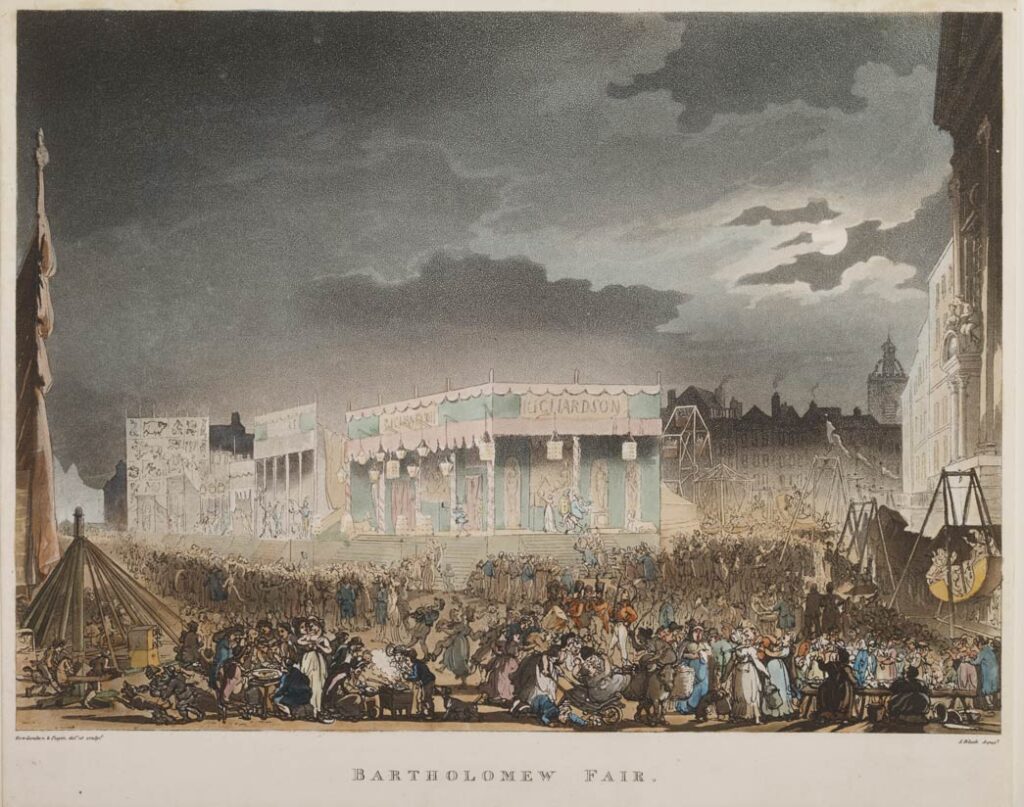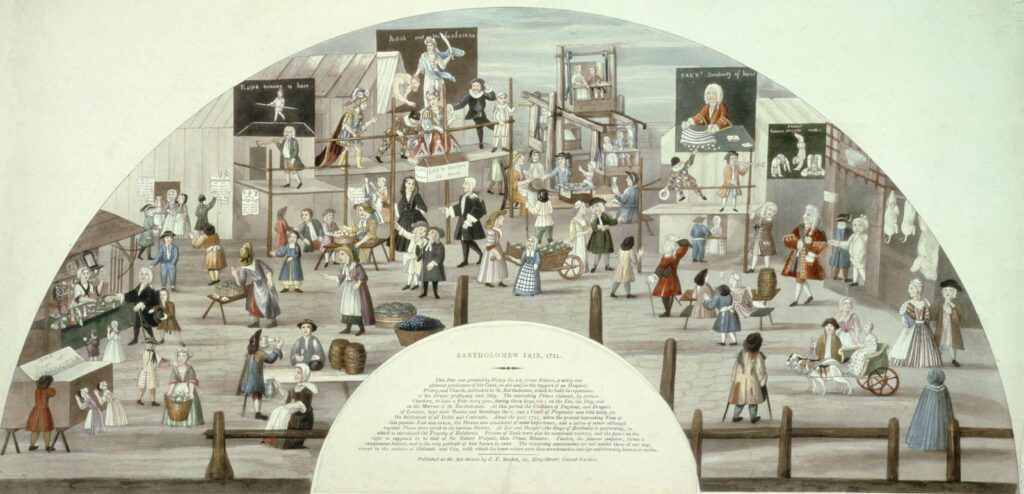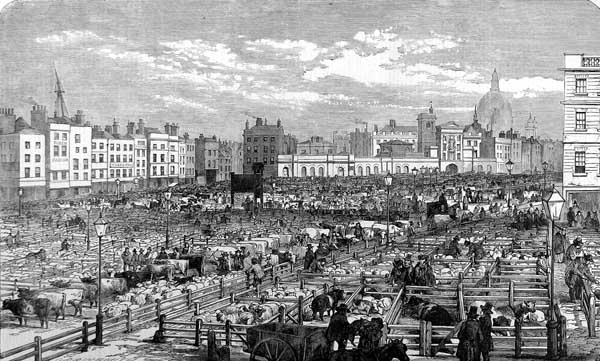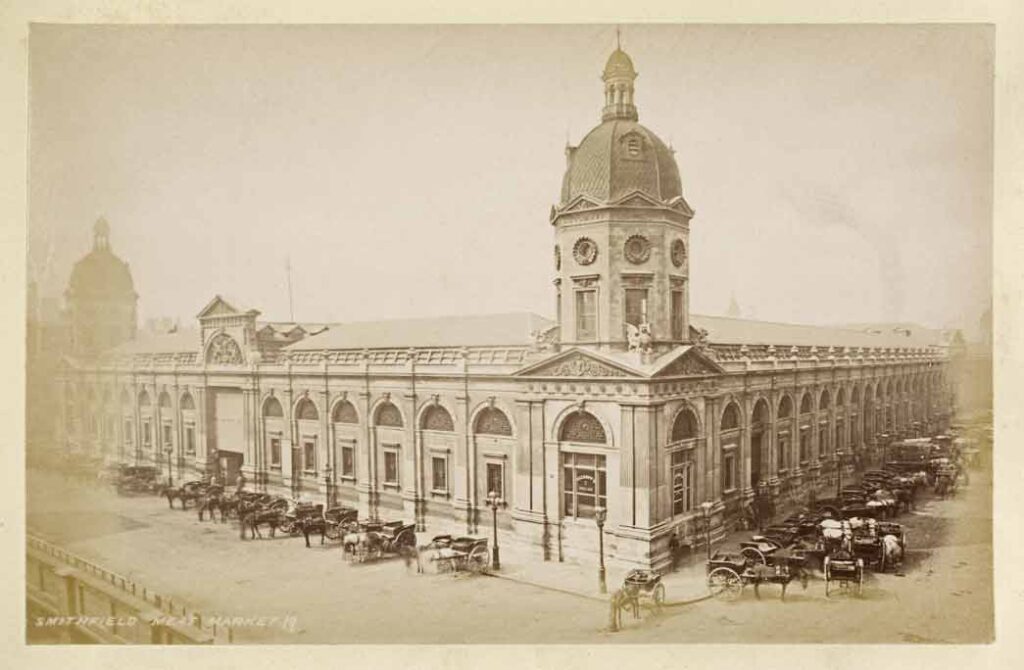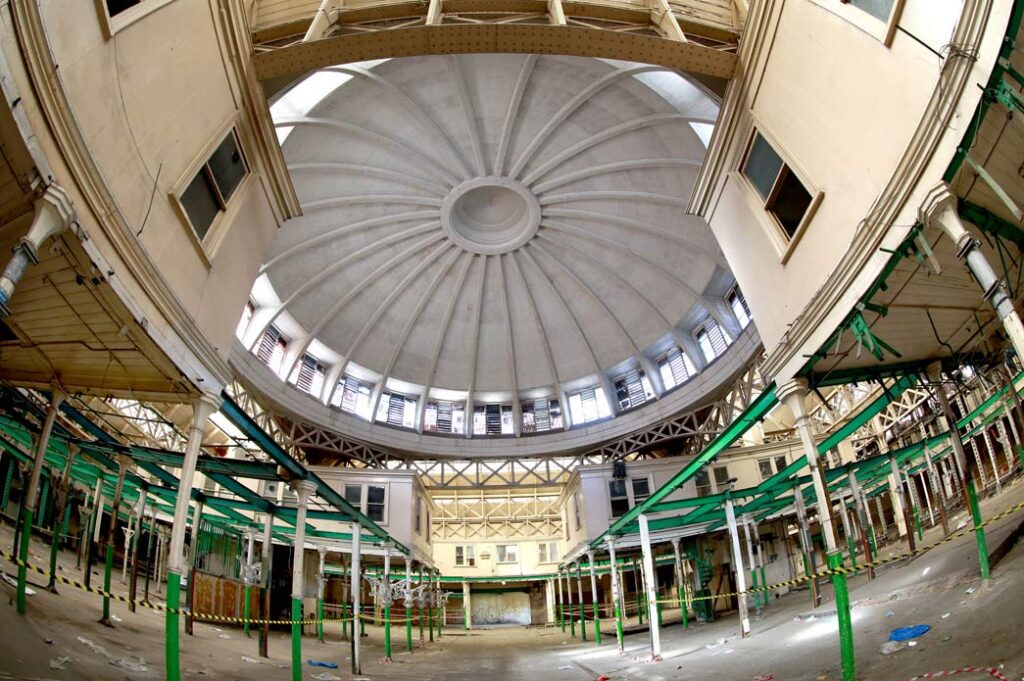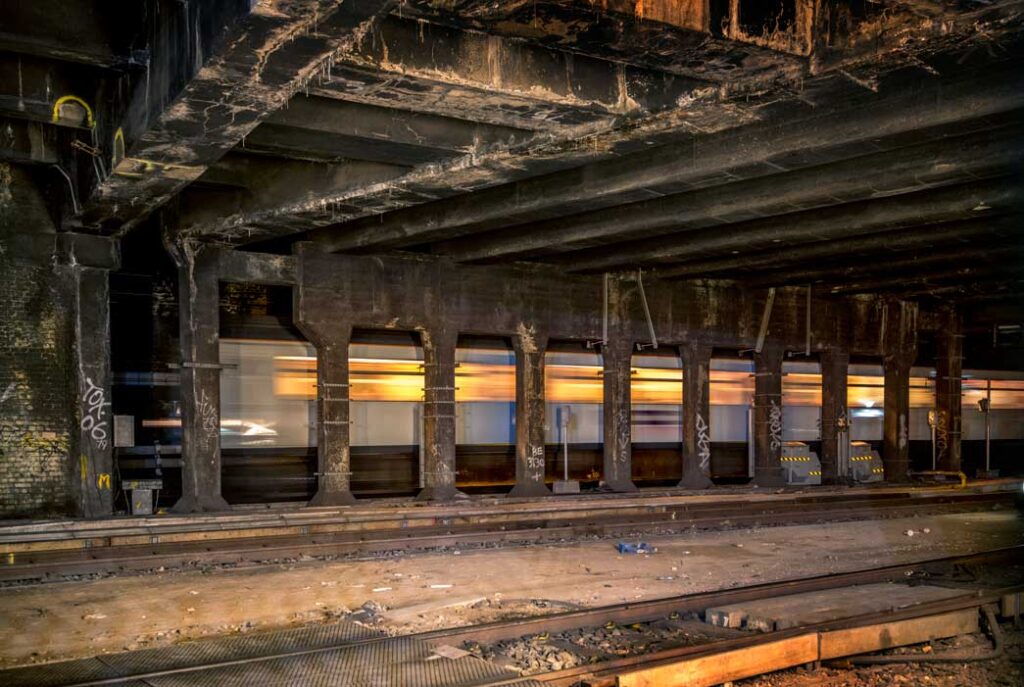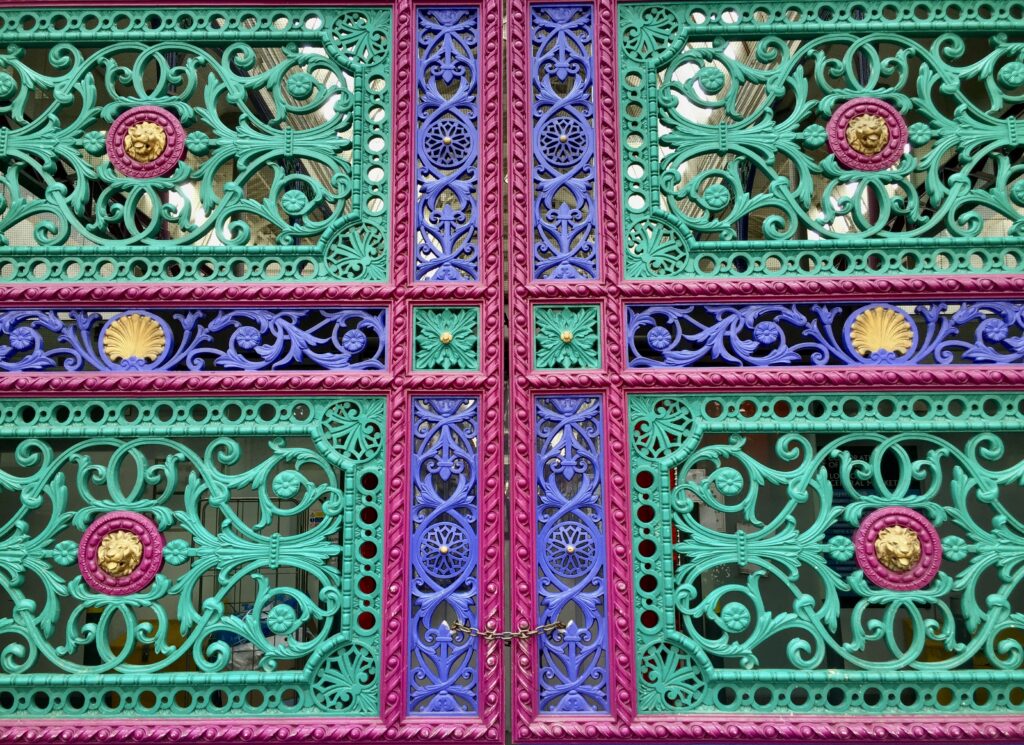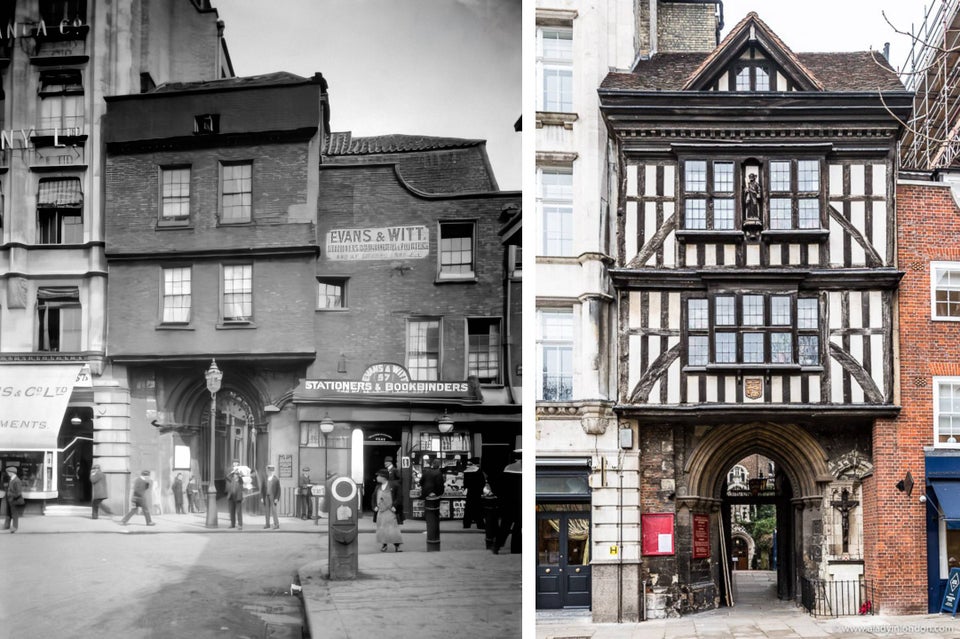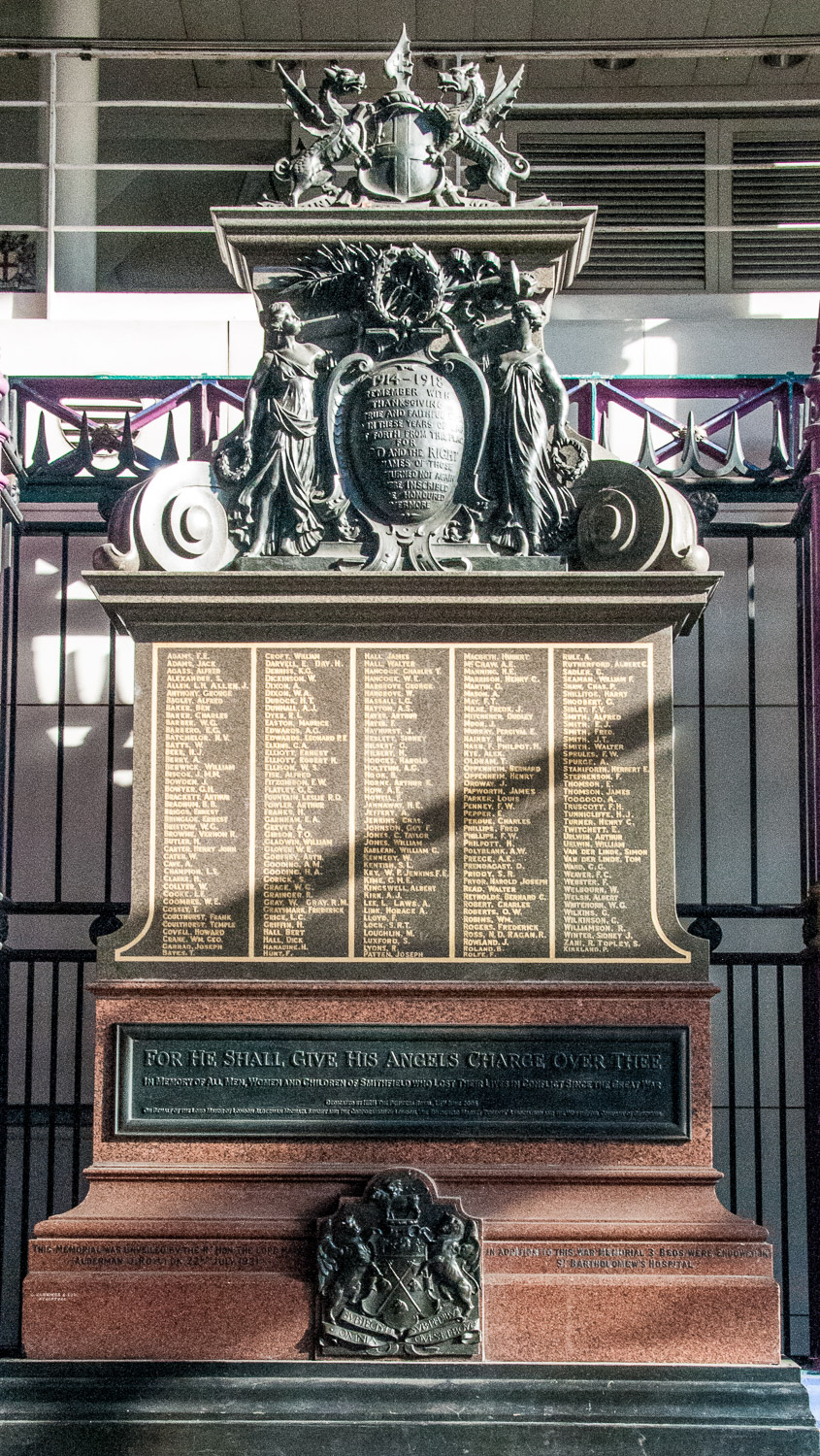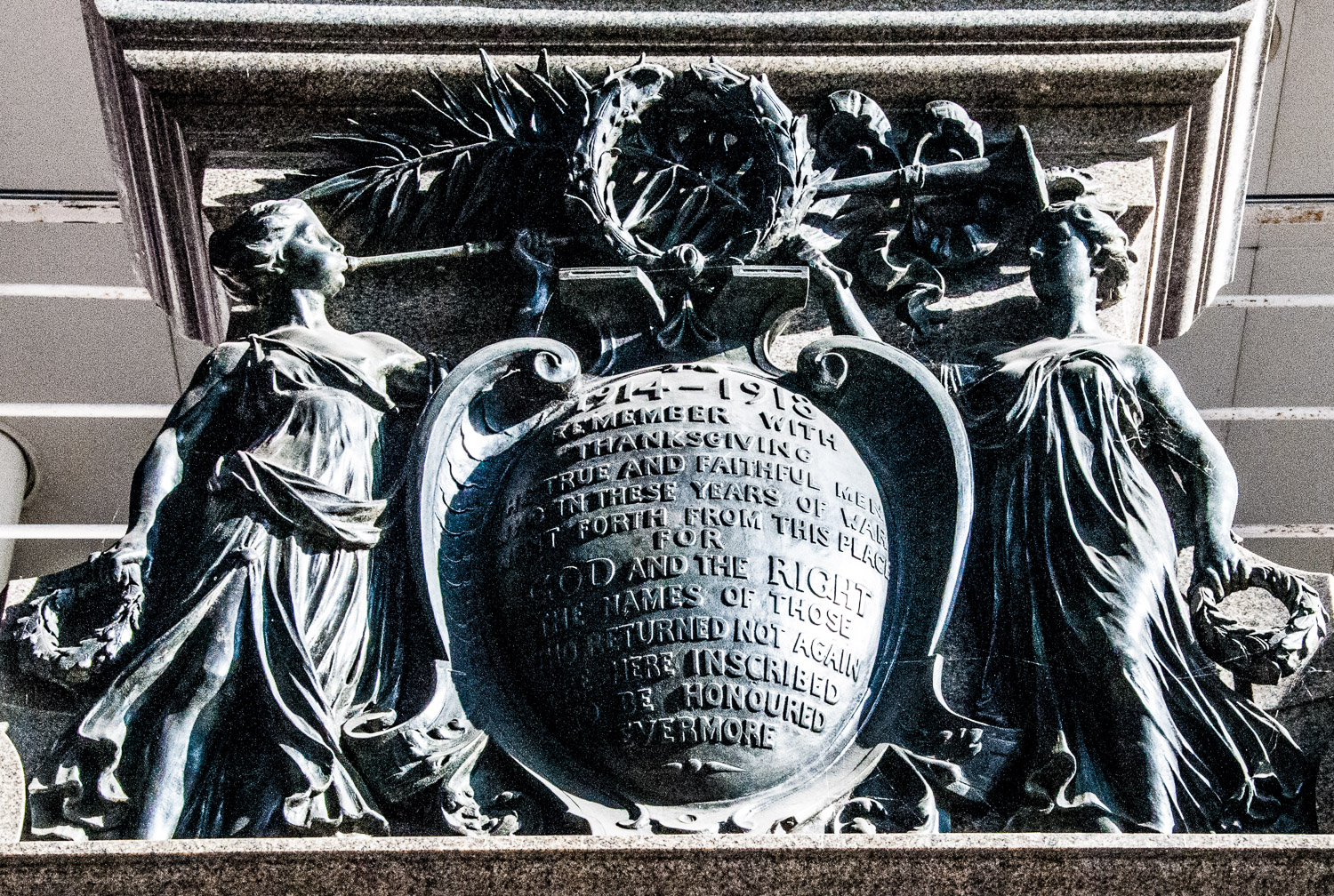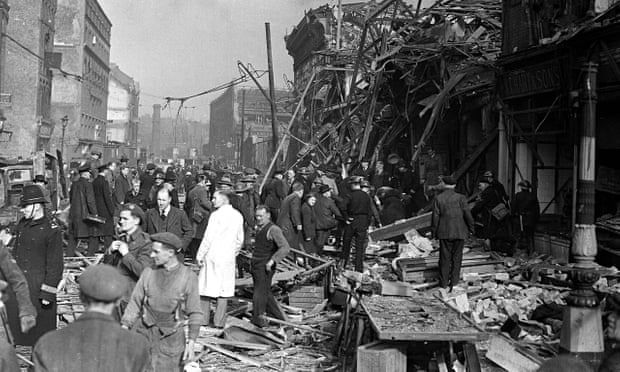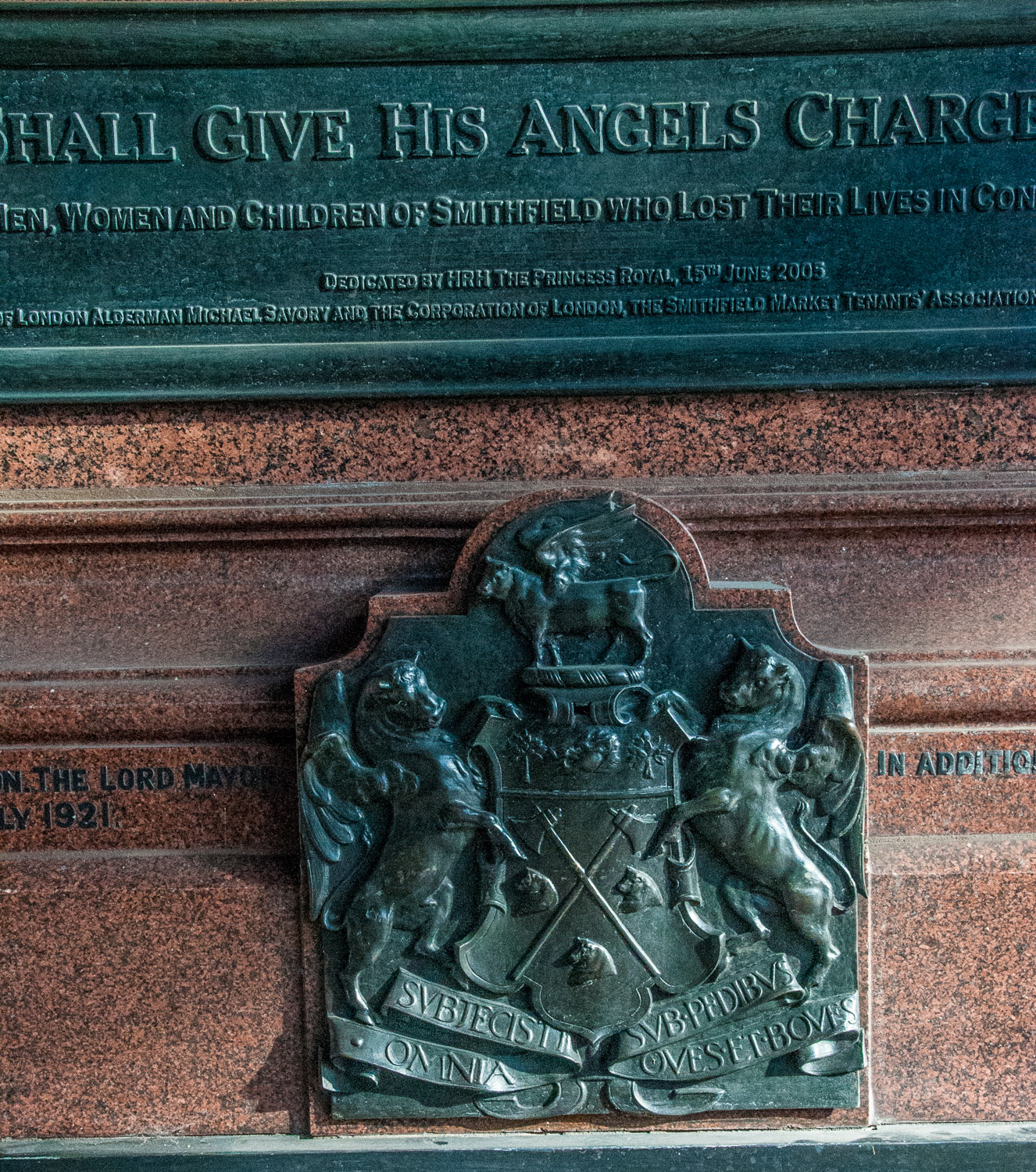I think this picture tells a story. The Gresham grasshopper on the roof of the Royal Exchange is dwarfed by the new monster office block on Bishopsgate and, to a lesser extent, the Cheesegrater. Will these buildings now ever be full?
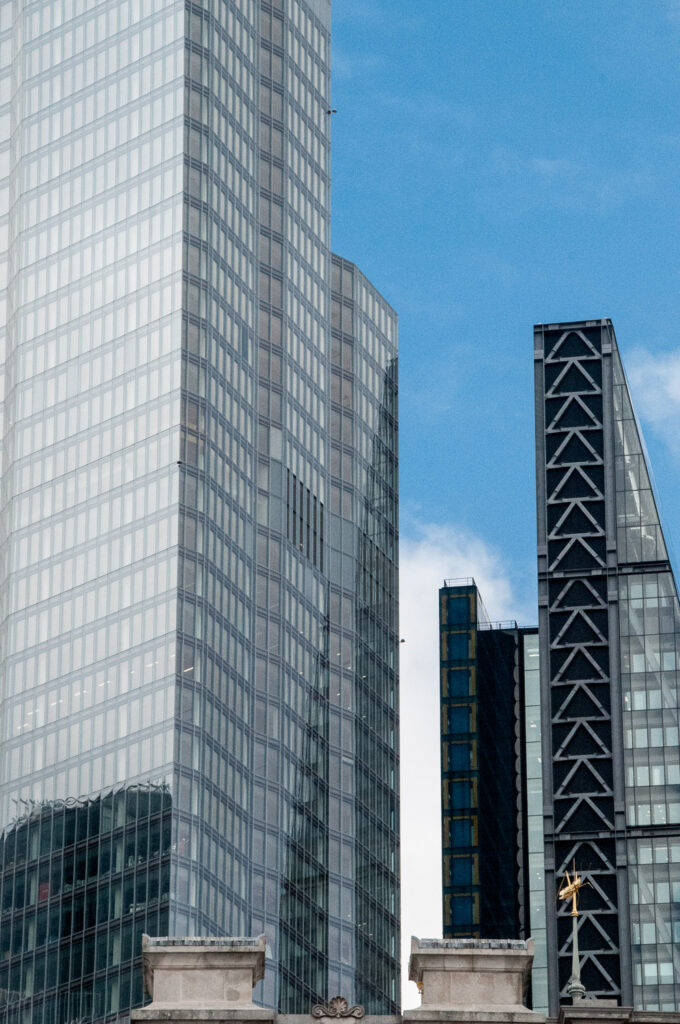
Outside the Exchange is this handsome chap, sitting without saddle or stirrups, on his fine steed …

Erected in 1844, it is, of course, the Duke of Wellington but the statue was not created to celebrate just his military achievements. On 19th July 1838 the Court of Common Council of the City of London agreed to a contribution of £500 towards its cost in appreciation of his efforts in assisting the passage of the London Bridge Approaches Act 1827. This Act led to the creation of King William Street. The government donated the metal, which is bronze from captured enemy cannon melted down after the Battle of Waterloo …
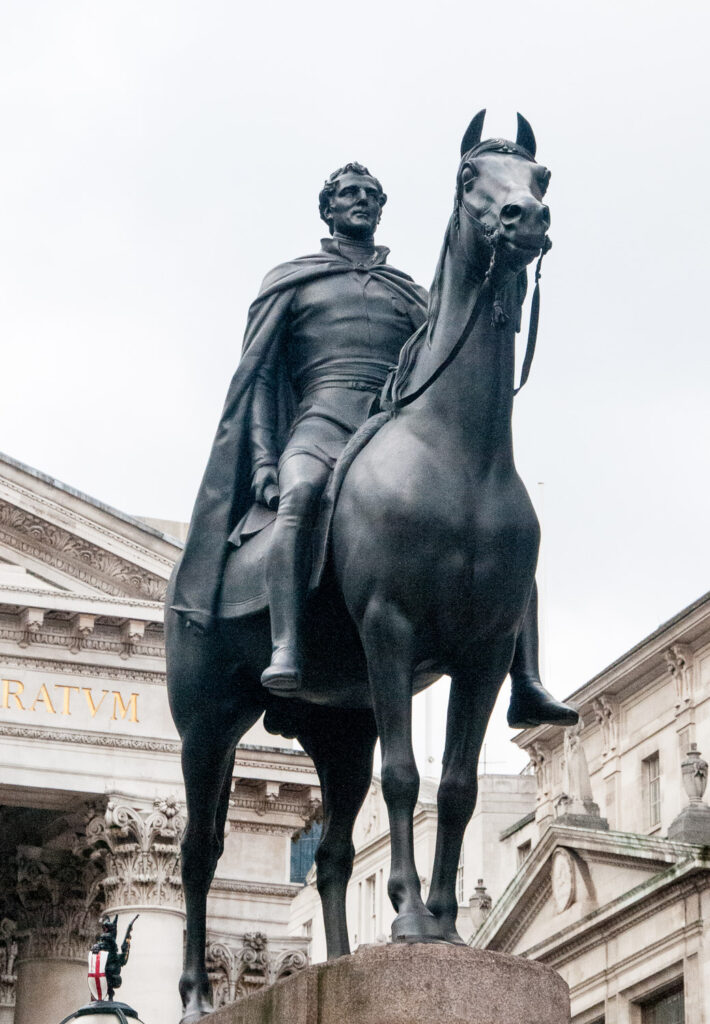
Not everyone approved. A writer to The Times declared …
…did his Grace ride at Waterloo without a saddle, without boots, without a hat and carrying his own despatches? … Is the charger supposed to be neighing to a blast of trumpets, or whinnying to the mare in the Mansion House?
Nearby is the war memorial to the London Troops …
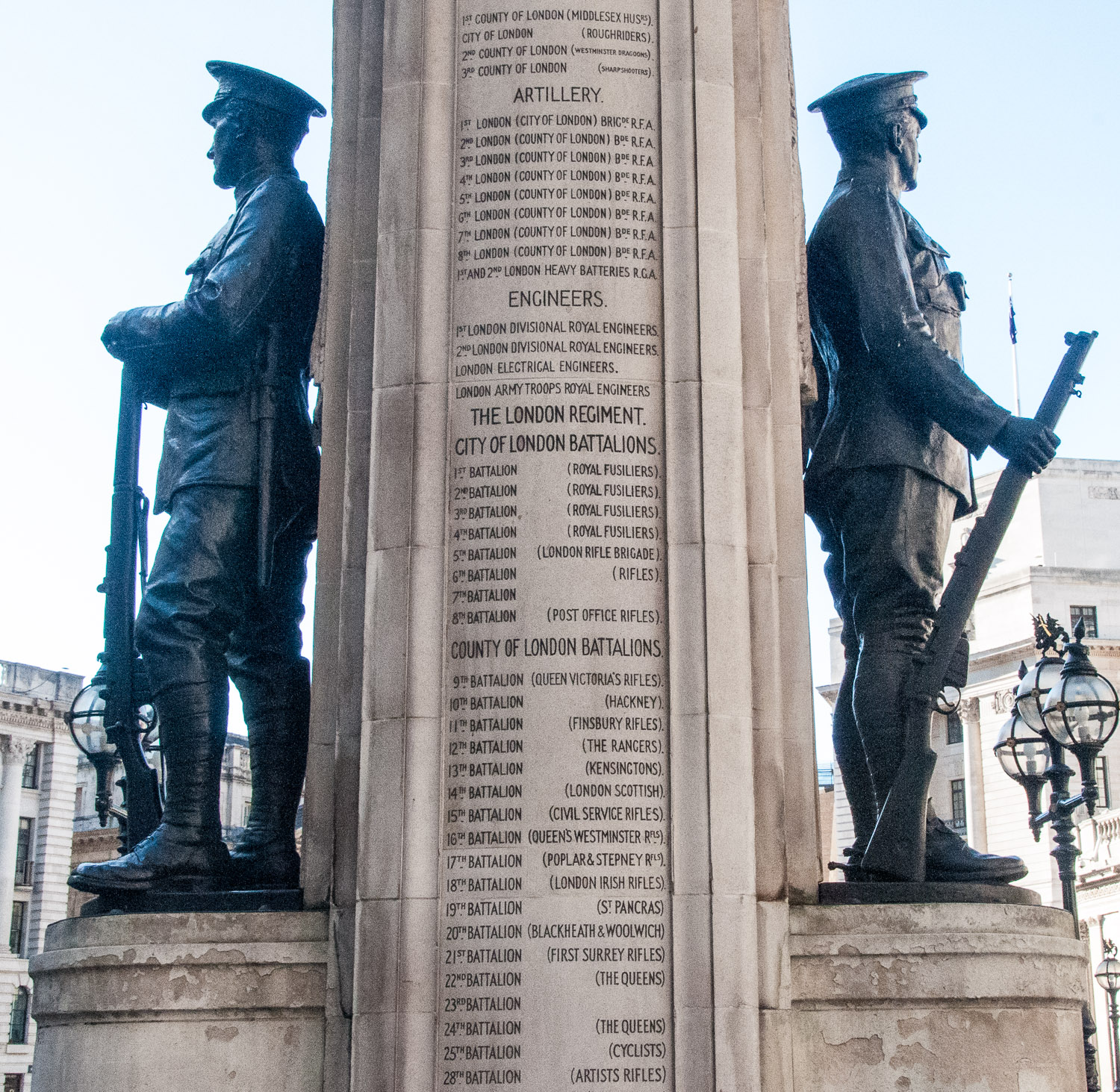
Standing on either side of the plinth are two soldiers of the London regiments, one middle-aged the other more youthful. It was unveiled on 12 November 1920 …
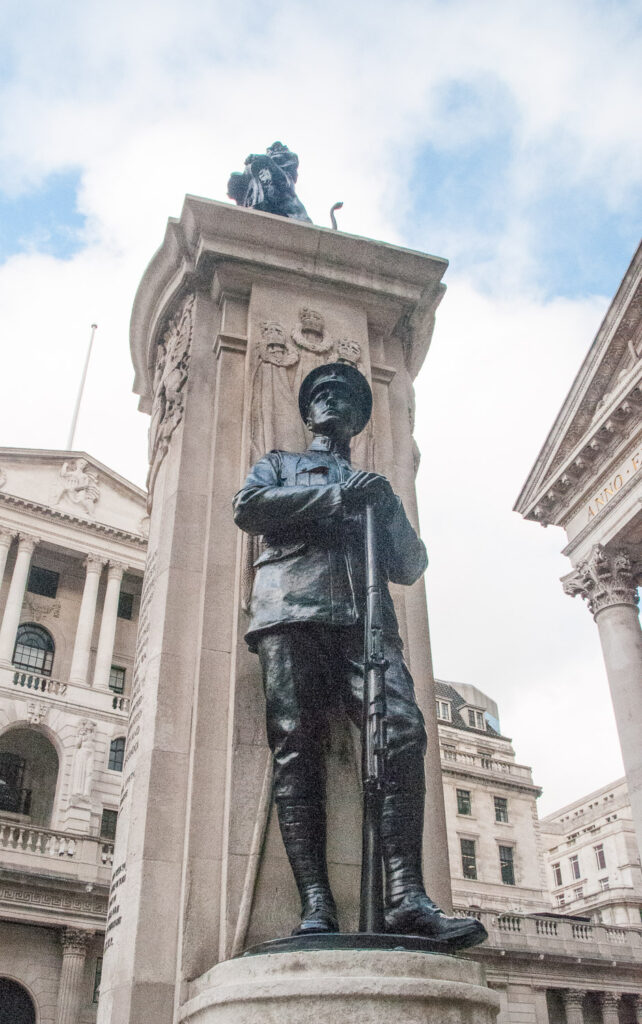
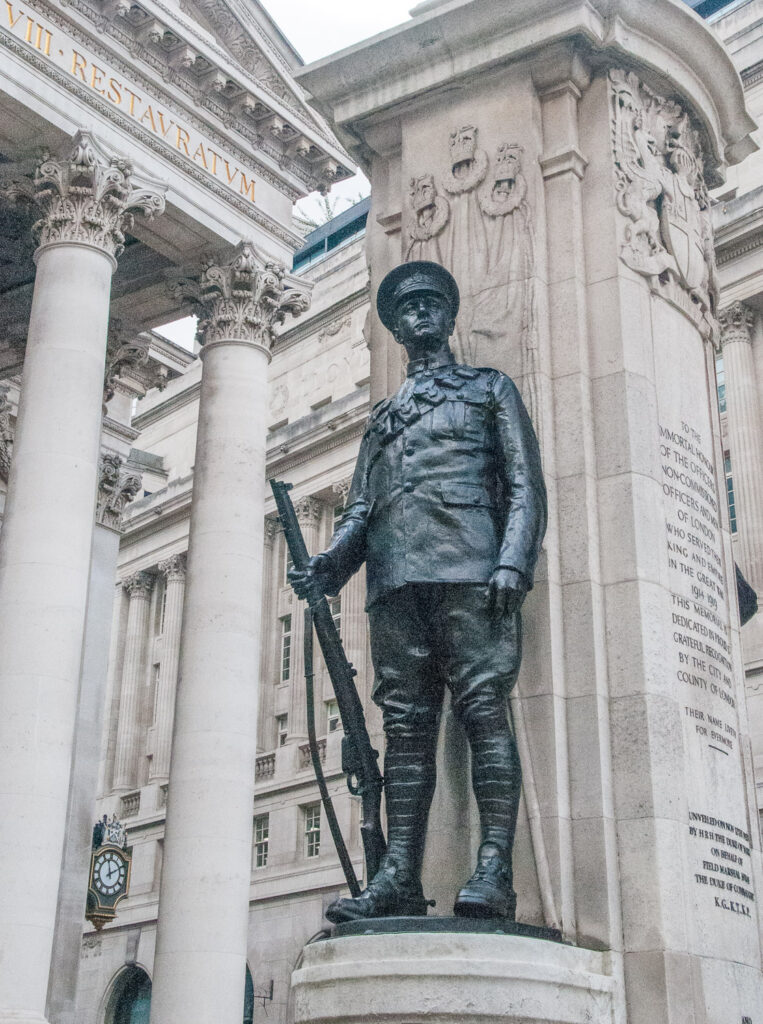
A leader in The Times was entitled ‘Our London Soldiers’ and extolled the bravery of the men who came …
… from counting-house and shop, from the far-reaching suburbs and the thronged centres … it will serve as a stimulus to the sense of unity and to the sense of duty now growing in our vast and diverse population.
At the bottom of the list of battalions, one in particular caught my eye, the Cyclists …
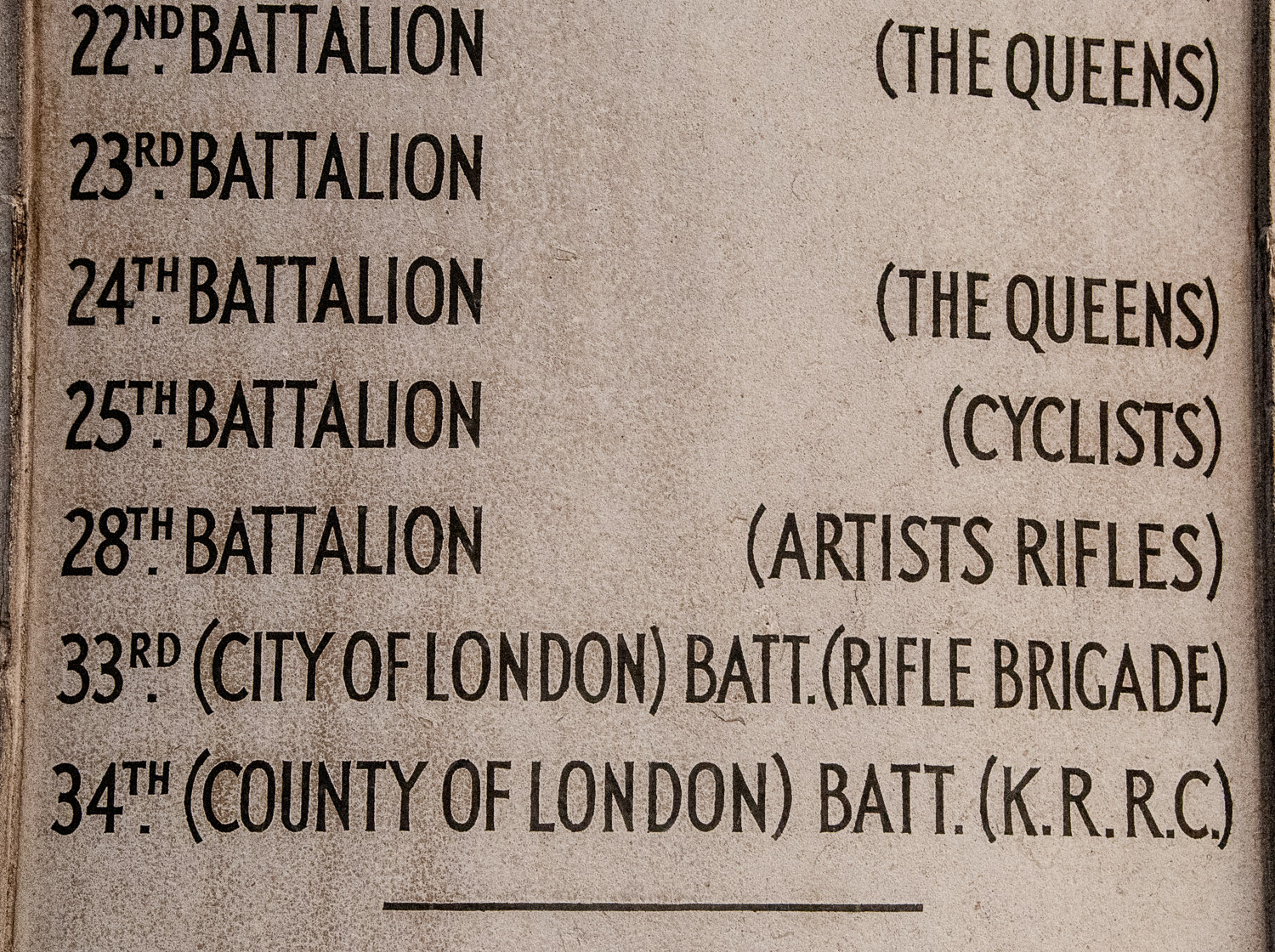
When visiting the Imperial War Museum I came across a postcard of this splendid recruitment poster from 1912. It is poignant to look at this picture with its pretty village setting and then think of the industrial age war of slaughter, mud and filth, that was soon to follow …
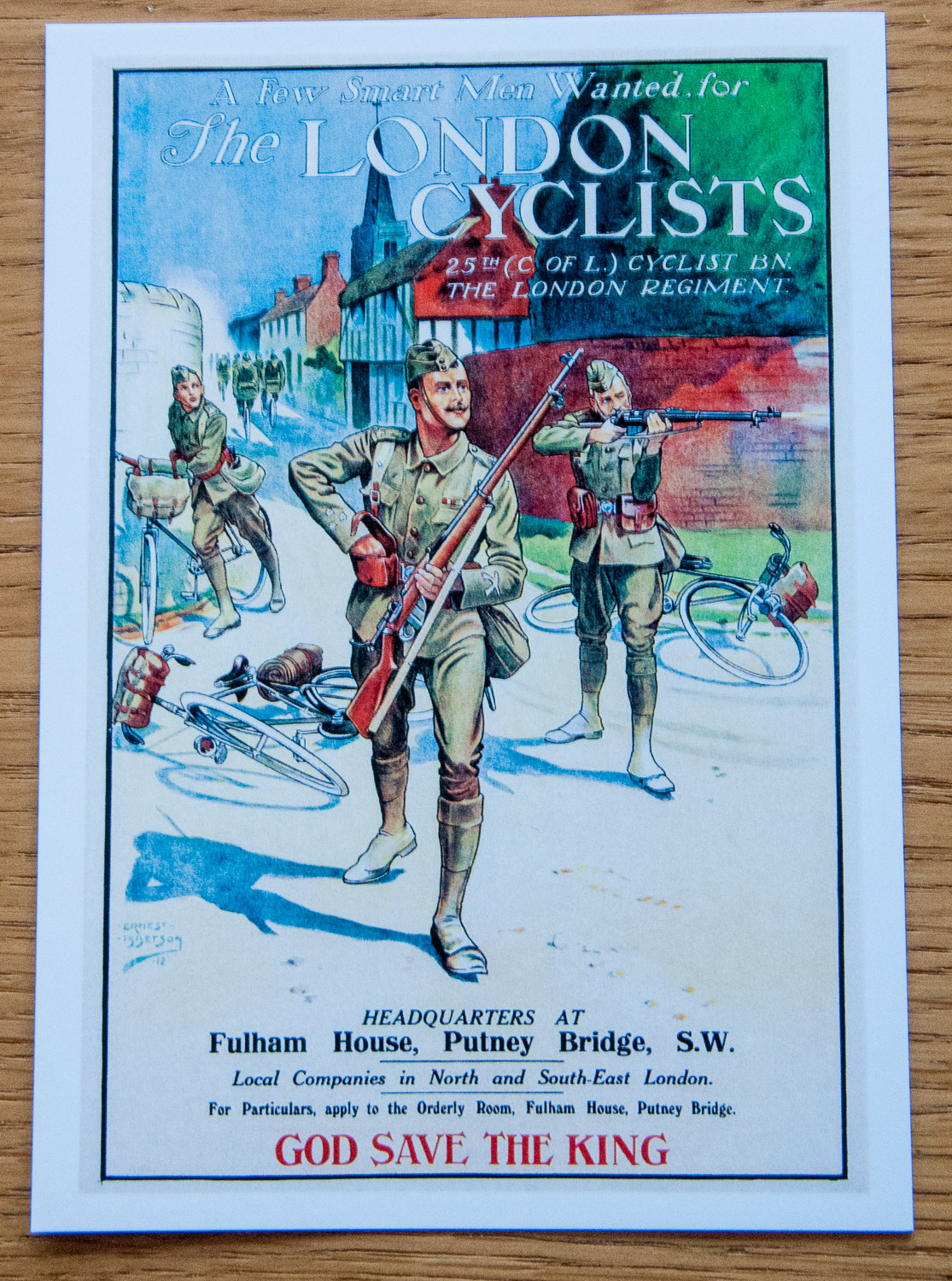
Often described as ‘standing at the back’ of the Royal Exchange, is a statue to a remarkable man – Paul Julius Reuter. The rough-cut granite sculpture by the Oxford-based sculptor Michael Black commemorates the 19th-century pioneer of communications and news delivery. It is a fitting place for the statue because the stone head faces the Royal Exchange which was the reason why Reuter set up his business in the City. He established his offices in 1851 on the opposite side of the walkway to the Royal Exchange – in other words, they were to the east of the Royal Exchange. The stone monument was erected by Reuters to mark the 125th anniversary of the Reuters Foundation. It was unveiled by Edmund L de Rothschild on 18 October 1976 …

The life of Reuter was most interesting. Having started his career as a humble clerk in a bank, he went on to ‘see the future’ of transmitting the news – regardless of whether it was financial or world news. If the ‘modern’ technology of telegraphy – also known then as Telegrams – was not in place, Reuter used carrier pigeons and even canisters floating in the sea to convey news as fast as possible. Such was his ambition to be the first with the news.
Just across the road is another bearded gentleman, studiously studying some plans. James Henry Greathead was a South African engineer (note the hat) who invented what was to become known as the Greathead Shield. He came to be here on Cornhill because a new ventilation shaft was needed for Bank Underground Station and it was decided that he should be honoured on the plinth covering the shaft …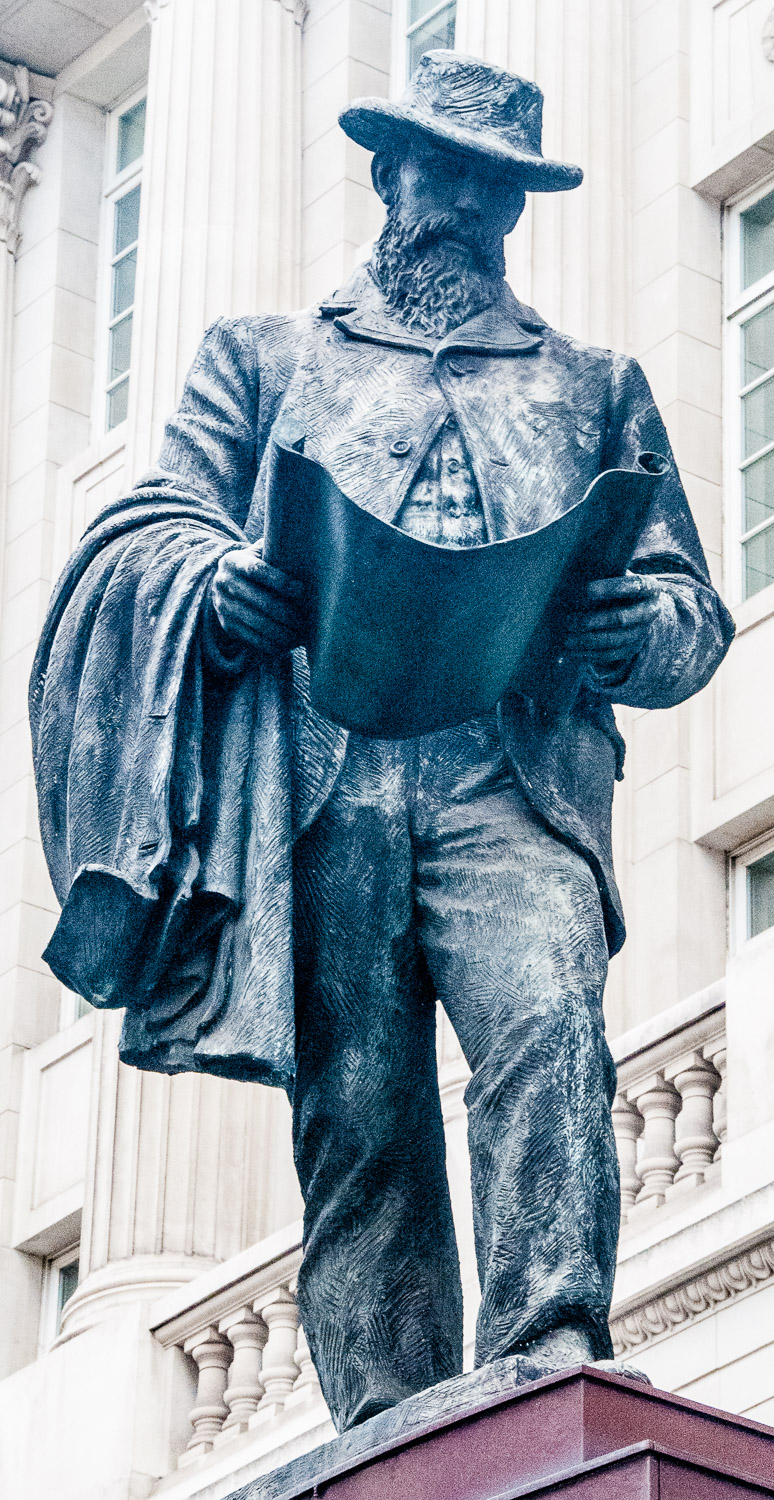
The Shield enabled the London Underground to be constructed at greater depths through the London clay. The miners doing the tunneling, using pneumatic spades and hand shovels, would create a cavity in the earth where the Shield would be inserted to hold back the walls whilst the miners installed cast-iron segments to create a ring. The process would be repeated until a tunnel had formed in the shape of a ‘tube’, which is where we get the nickname for the network today. A plaque on the side of the plinth shows the men at work …
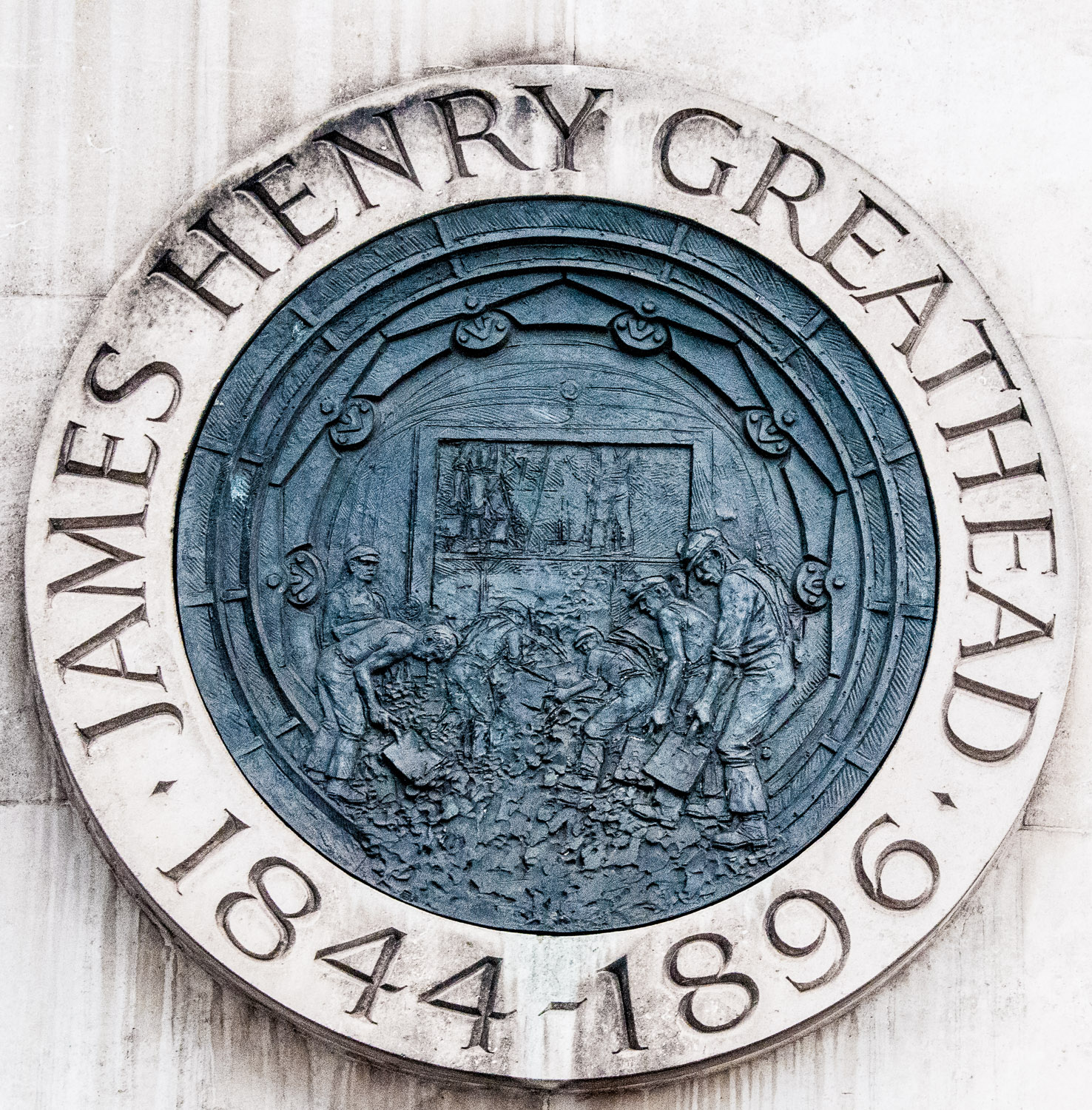
What about this fine fellow dominating the small courtyard outside St Mary-le-Bow (sporting another great beard) …
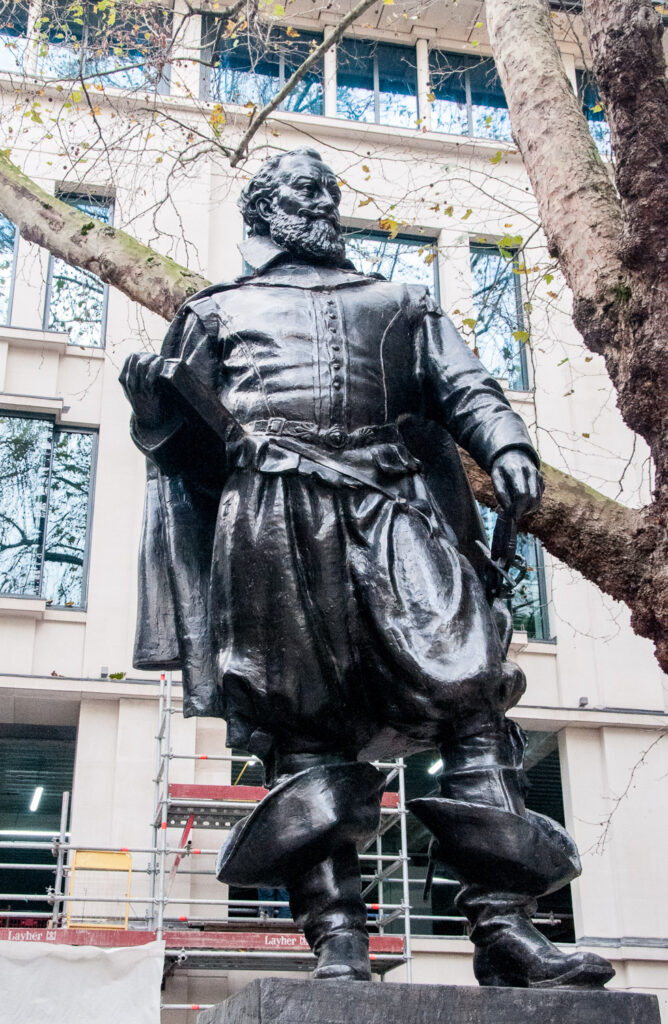
This is Captain John Smith. A colonial adventurer, Smith was a Citizen and Cordwainer, and set sail from Blackwall to found the colony of Virginia in 1606. Following a period as the prisoner of the native Americans he became head of the settler’s colony before returning to London in 1609-10. He later claimed that during his captivity his life had been saved by ‘Princess’ Pocahontas who pleaded with her father, the paramount Chief, that he be spared execution. Doubt has been cast on this story but early histories did establish that Pocahontas befriended Smith and the Jamestown colony. She often went to the settlement and played games with the boys there. When the colonists were starving, ‘every once in four or five days, Pocahontas with her attendants brought him [Smith] so much provision that saved many of their lives that else for all this had starved with hunger’.
Queen Elizabeth the Queen Mother unveiled the statue on 31st October 1960 and you can watch a Pathe News film of the event here.
Incidentally, Pocahontas went on to marry an Englishman, John Rolfe, visited London, and became quite a celebrity. Sadly she died on the return journey from causes unknown and was buried in St George’s Church Gravesend. Her grave has since been lost.
This is a 1616 portrait engraving of her by Simon de Passe. What a super hat …
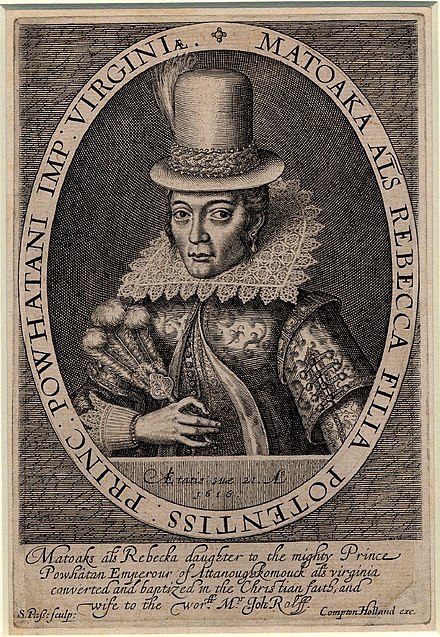
She was also commemorated on a 1907 postage stamp, the first native American to be honoured in this way …

Now another adventurous gentleman.
A memorial to Admiral Phillip was originally erected at St Mildred’s Church Bread Street. Although the church was destroyed by enemy action in 1941 the bronze bust was salvaged from its ruins. This modern copy can now be found on the south side of the New Change shopping centre, the original is in St Mary-le-Bow church …
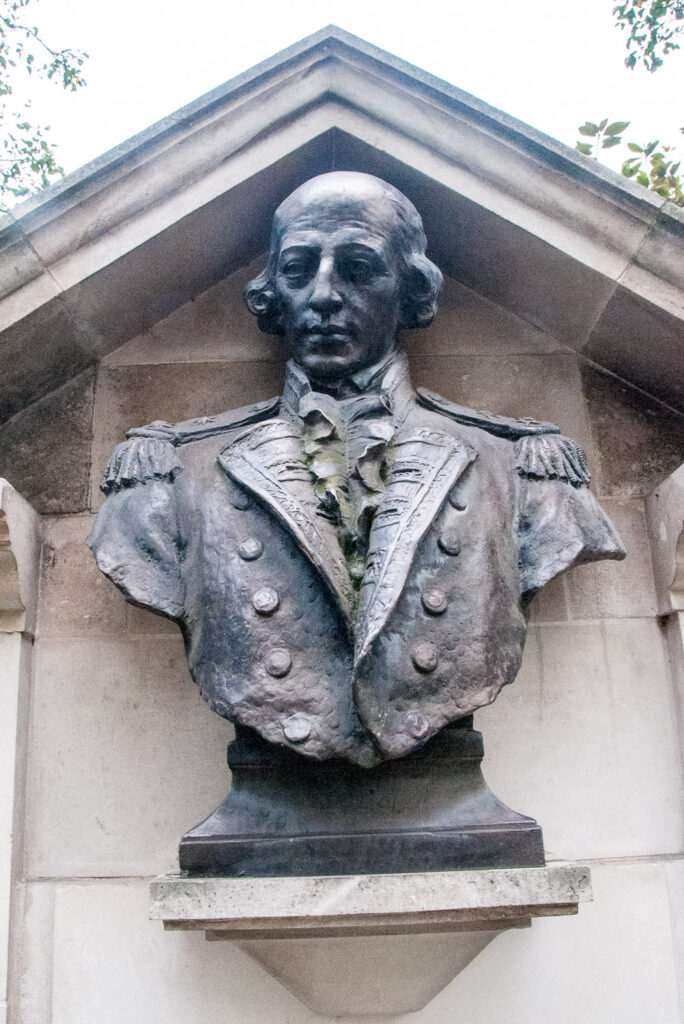
The plaque makes interesting reading …
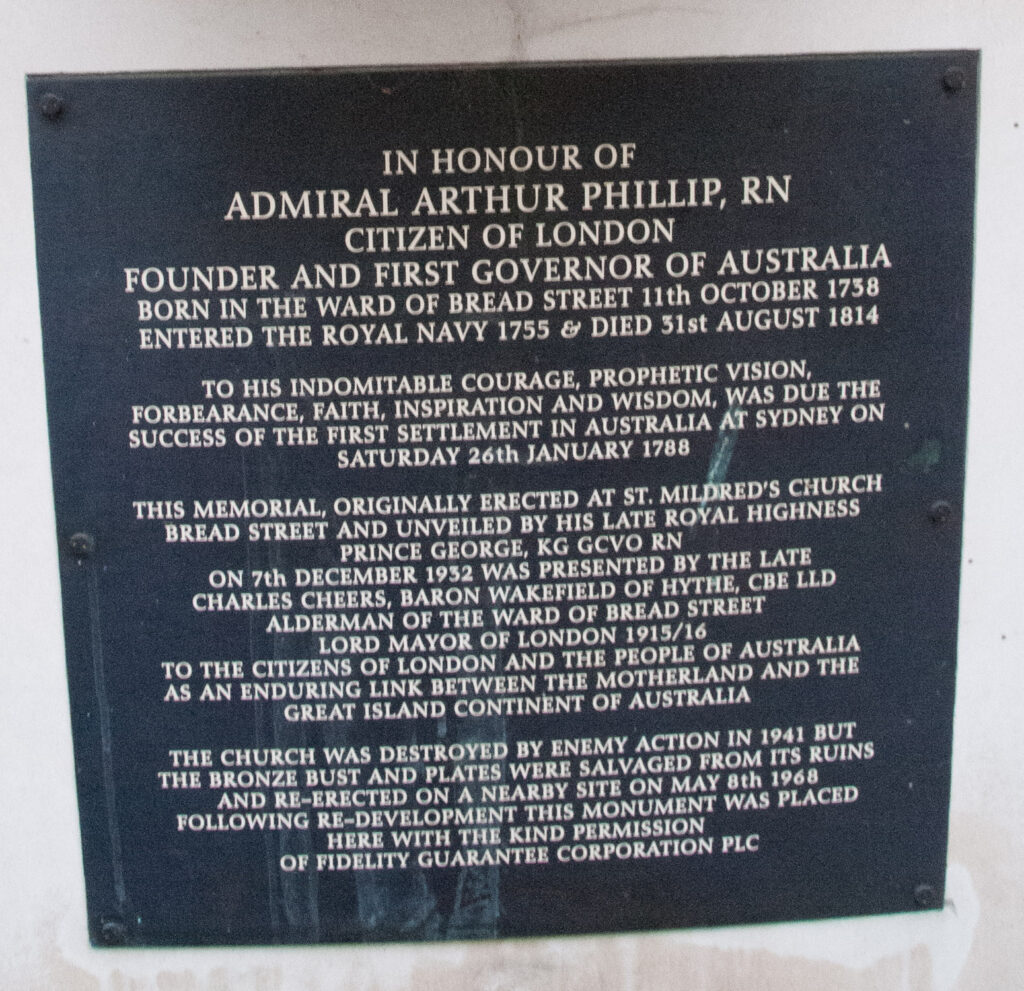
And now a woman and a man dressed somewhat… er … unconventionally.
Let’s start with this extraordinary statue at 193 Fleet Street now, sadly, rather weathered …
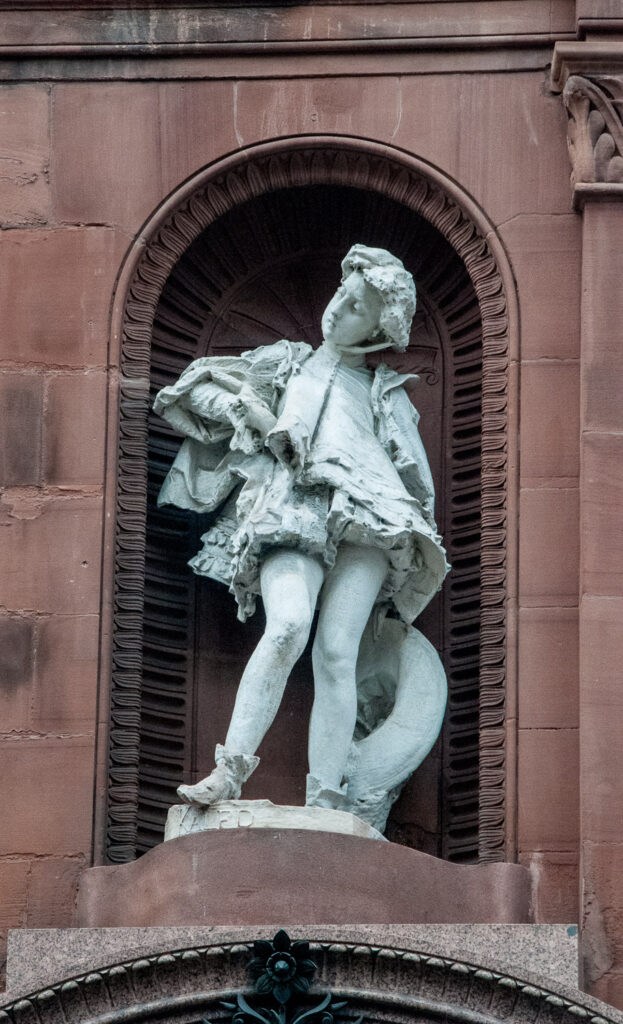
I always thought that it resembled a rather effeminate youth but it is in fact a woman disguised as a pageboy, her name, Kaled, appears just under her right foot.
It is by Giuseppe Grandi, and dates from 1872. The shop owner, George Attenborough, had a niche created specially for it over the front door. Kaled is the page of Count Lara in Bryon’s poetic story of a nobleman who returns to his ancestral lands to restore justice. He antagonises the neighbouring chieftains who attack and kill him. Kaled stays with his master and lover to the end, when it is revealed he is in fact a woman. (Spoiler alert) She goes mad from grief and dies.
There seems to be no end to the wonderful paintings to be found at the Guildhall Art Gallery. This one is a representation of a famous Greek myth – the murder by Clytemnestra of her husband Agamemnon. Here she stands, wild-eyed in the Mediterranean sunlight, outside the room where she has committed the deed. In the background behind her we can just make out the outline of a dimly lit body …
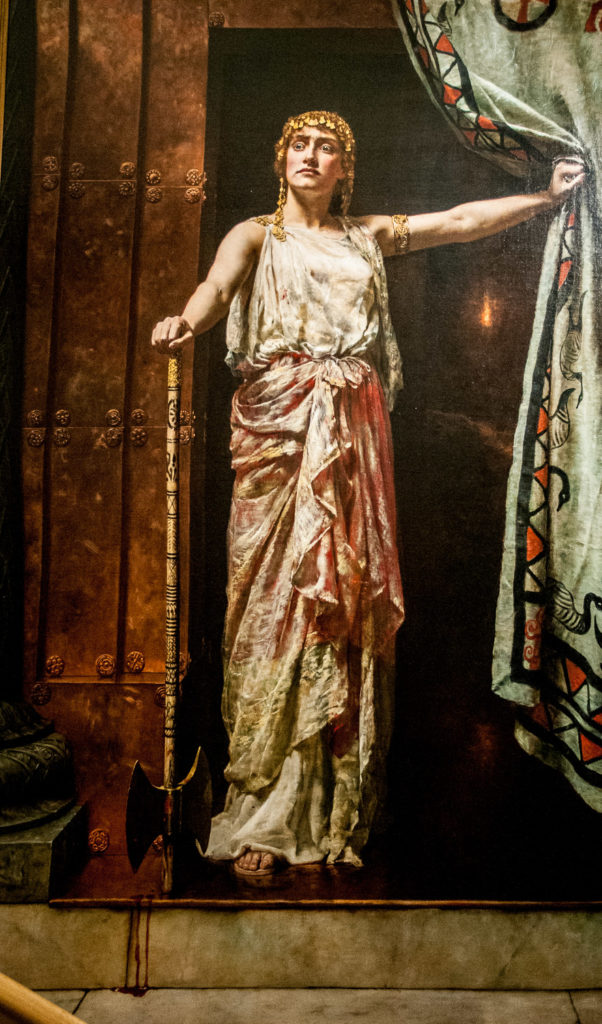
Agamemnon had commanded the Greek forces which besieged Troy during the Trojan Wars. Before setting sail for home, he sacrificed their youngest daughter Iphigenia to ensure a favourable wind for his fleet. To make matters worse, he returned with his lover, the prophetess Cassandra, the captured daughter of King Priam of Troy. Enraged and grieving, Clytemnestra and her son murdered them both in revenge
Collier was famous for his close attention to detail. There is light etching on the axe blade and the blood drips and runs authentically. All the little roundels we can see in the picture are different …

One has to say, however, that the more you study the figure the more it looks like a man. There is a pure physical dominance – and look at the muscular arms and large hands gripping the axe handle and holding back the curtain …
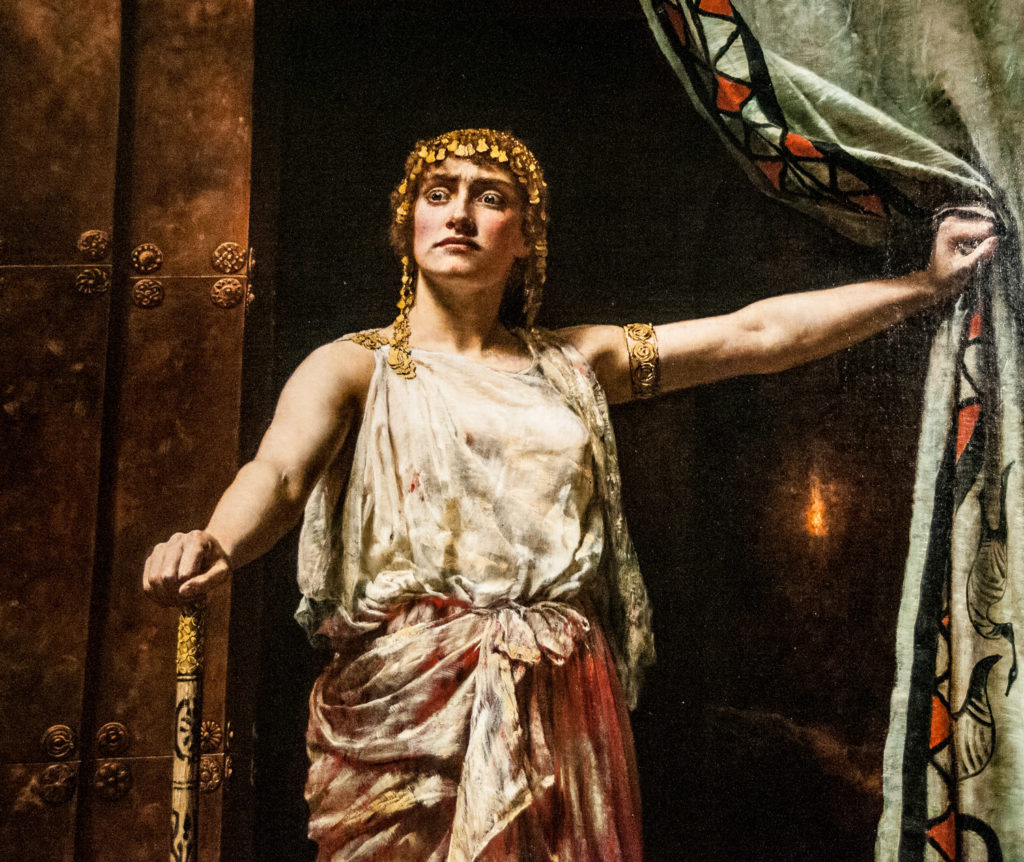
It is now thought that Collier took his inspiration from an 1880 performance of Aeschylus’s Agamemnon at Balliol College, Oxford in which Clytemnestra was played by a male student, one Frank Benison.
Also in the gallery is this David Wynne sculpture of Prince Charles …
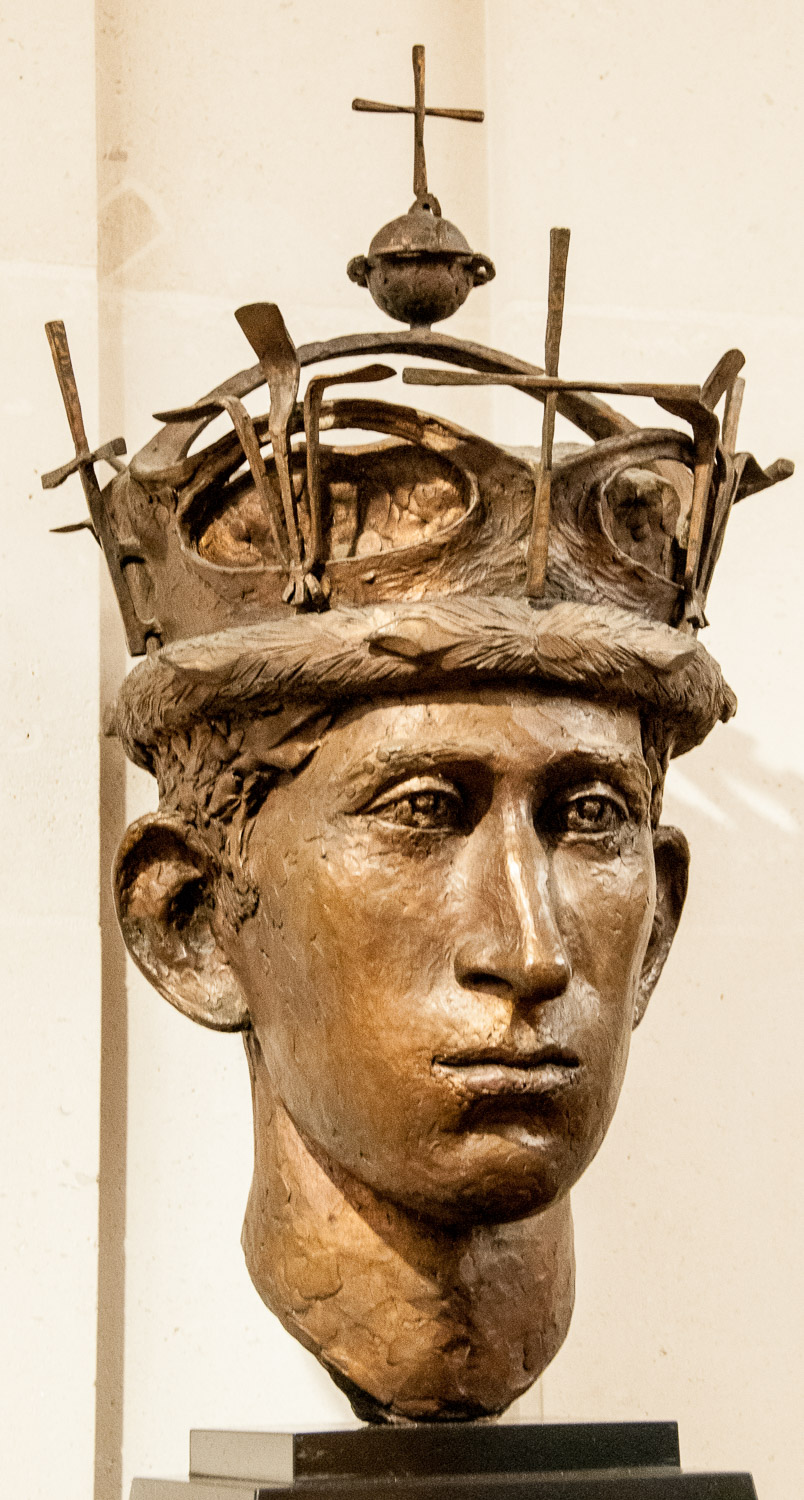
He just doesn’t look happy, does he? Maybe he wasn’t too keen on the rather spiky modern version of a coronet that he is wearing here at his 1969 Investiture as Prince of Wales. It was designed by a committee chaired by his auntie Princess Margaret’s husband, Antony Armstrong-Jones (later Lord Snowdon). The globe and cross at the top was originally intended to be solid gold but the committee concluded that this would be far too heavy. The solution was to use a gold plated ping-pong ball – which is why I always smile at this portrayal of the Prince (and possibly why he doesn’t appear to have ever worn the item again).
Just by way of further light relief I have found another spooky clothes model to add to my collection (see last week’s blog) …

And these ‘eyebrows’ in the Cheapside Sunken Garden made me laugh. Part of the London Festival of Architecture, they entitled Look Up and are by Oli Colman …

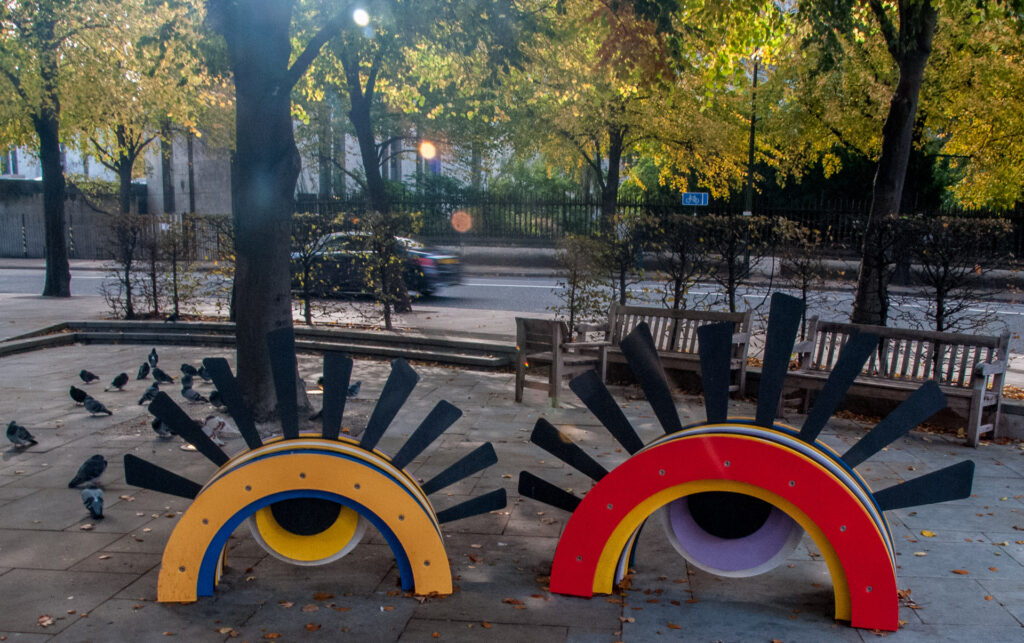
Finally, I loved this joyful Hermes shop window at the Royal Exchange …
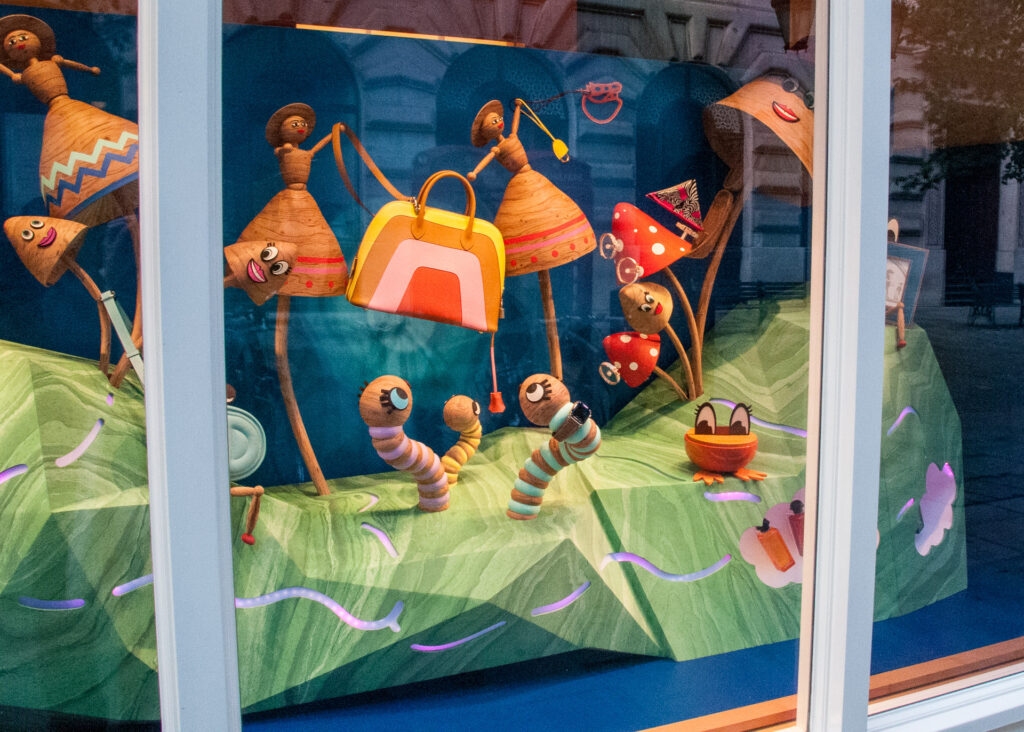
As is often the case I am grateful to Philip Ward-Jackson for much of the detail about the sculptures. I highly recommend his book Public Sculpture of the City of London, still available at Waterstones.
If you would like to follow me on Instagram here is the link …
